-
Recent Posts
Categories
Search
-
Recent Posts
Recent Comments
- Upcoming Archives’ Events Series! | Tennessee Tech University Archives and Special Collections on Watergate Roach Race Rules and Regulation
- University Archives on Big Name Entertainment: The Exhibit, 1960s-1980s
- University Archives on Big Name Entertainment: The Exhibit, 1960s-1980s
- Tom Peters '71 on Big Name Entertainment: The Exhibit, 1960s-1980s
Archives
- November 2025
- August 2025
- June 2024
- March 2024
- February 2024
- December 2023
- November 2023
- October 2023
- September 2023
- August 2023
- July 2023
- May 2023
- March 2023
- January 2023
- November 2022
- September 2022
- August 2022
- June 2022
- April 2022
- March 2022
- February 2022
- December 2021
- September 2021
- July 2021
- June 2021
- May 2021
- April 2021
- February 2021
- November 2020
- October 2020
- September 2020
- August 2020
- July 2020
- June 2020
- May 2020
- March 2020
- February 2020
- January 2020
- December 2019
- February 2019
- September 2018
- February 2018
- January 2018
- October 2017
- August 2017
Categories
Meta
Cosmouse Sewing Pattern
Posted in Uncategorized
Comments Off on Cosmouse Sewing Pattern
Archives Turns Campus History into New Tradition with Inaugural Watergate Roach Run
by Shonia George
Tennessee Tech celebrated Watergate Day on October 28 with a creative twist on campus history: the Inaugural Watergate Roach Run, an interdepartmental cockroach race hosted by Archives and Special Collections at Tucker Stadium and broadcast on the Jumbotron. This event was part of the Archives Event Series and served as a fundraiser to support archival initiatives, blending fun with purpose.
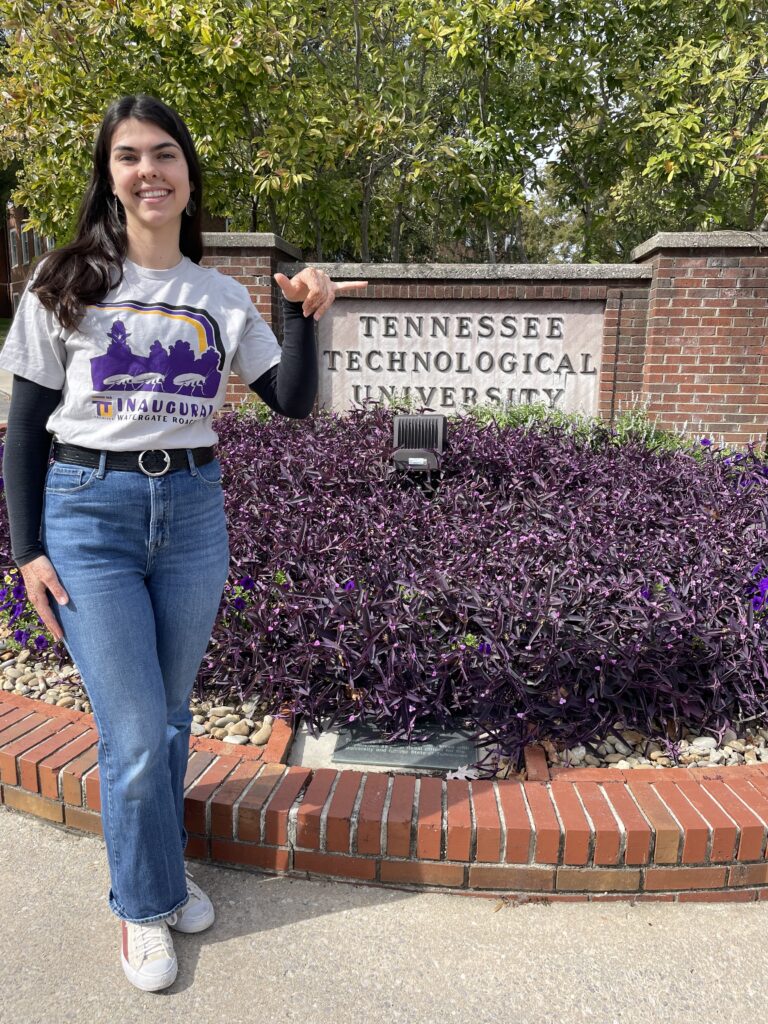
Watergate became a campus legend and an alumnus after winning the Great American Bug Race held at Palm Beach Atlantic College in West Palm Beach, Florida, in 1986. Following its memorial service held on campus, October 28 was officially designated Watergate Day, honoring Tennessee Tech’s creative and humorous spirit.
The Archives envisioned the Roach Run as a way to spark camaraderie between departments, engage alumni, and celebrate Tech’s quirky traditions, and it delivered. The race drew 38 contestants and a lively crowd from the campus and the community.
Alumni pride was strong, with Bob Luna, an ’80s Tech graduate, serving as announcer and keeping the audience entertained with his energetic play-by-play. Also in attendance was Teri Fosbinder, a member of the original Oracle team who named Watergate and helped send the famous roach to the Great American Bug Race in 1986. Thomas Lynn, another ’80s alumnus, joined the celebration as part of the community.
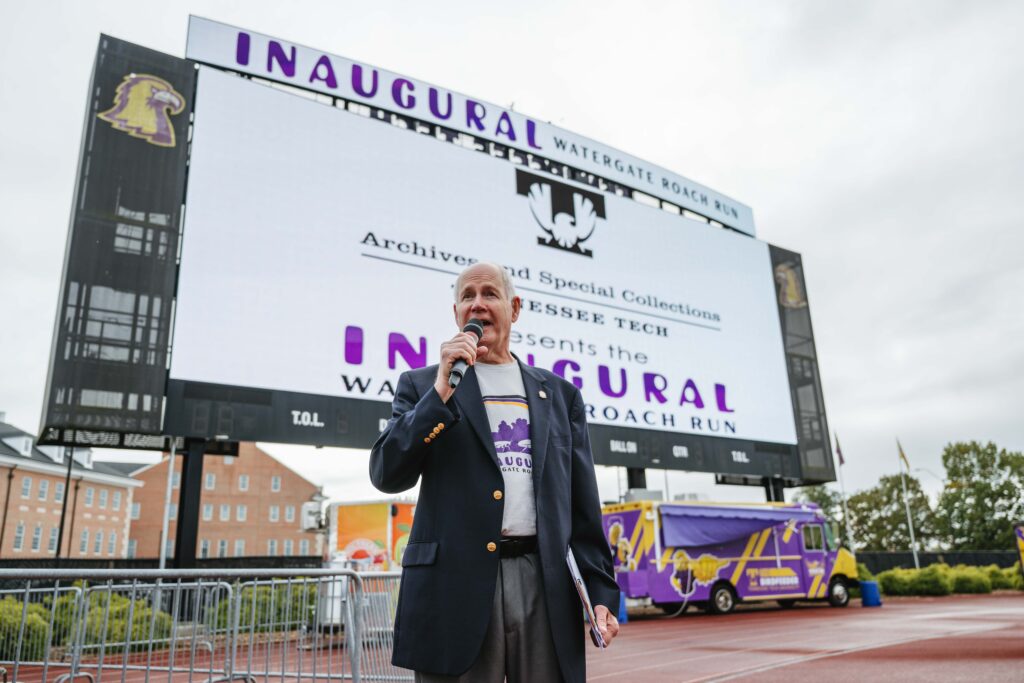
Campus support was evident, with the President’s Office registering their roach “Ghiradelli” early, and Susan Luna-Hazlewood, Executive Director of Alumni Engagement, connecting alumni with the campus activity, ensuring the event bridged generations of Golden Eagles. Alumni Engagement entered the race with their roach “CAC-roach,” pronounced “Cack-roach” with an added Boston accent.
This year, the second-ever “Extinguished Award” went to Li’l P from Pennebaker Hall, a local roach from the Biology Department. Lil’ P displayed resilience and personality, a fitting tribute to the event’s playful nature. The first “Extinguished Award” went to the race’s namesake, Watergate. Adding to the excitement, the Watergate Roach Run trophy honors will rotate annually between winning departments, making this tradition even more competitive and fun.
The Archives and friends wrapped up the celebration by participating in the Homecoming Parade, further cementing the Watergate Roach Run as a tradition that connects Tech’s past with its present.
Select Event Photographs

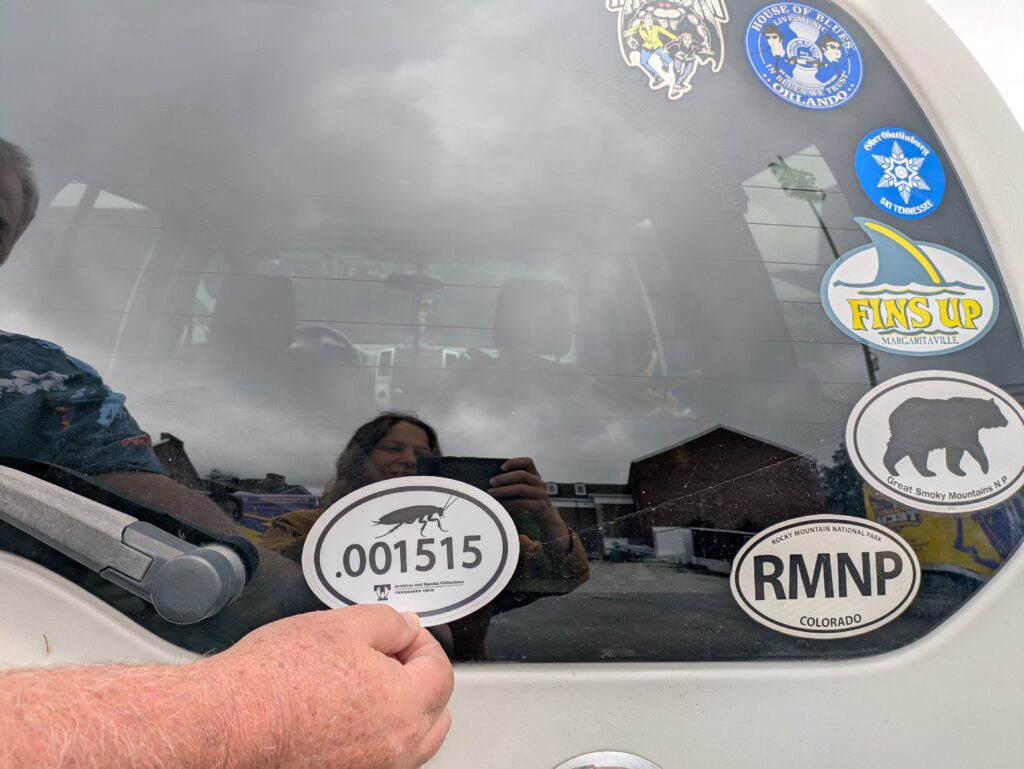
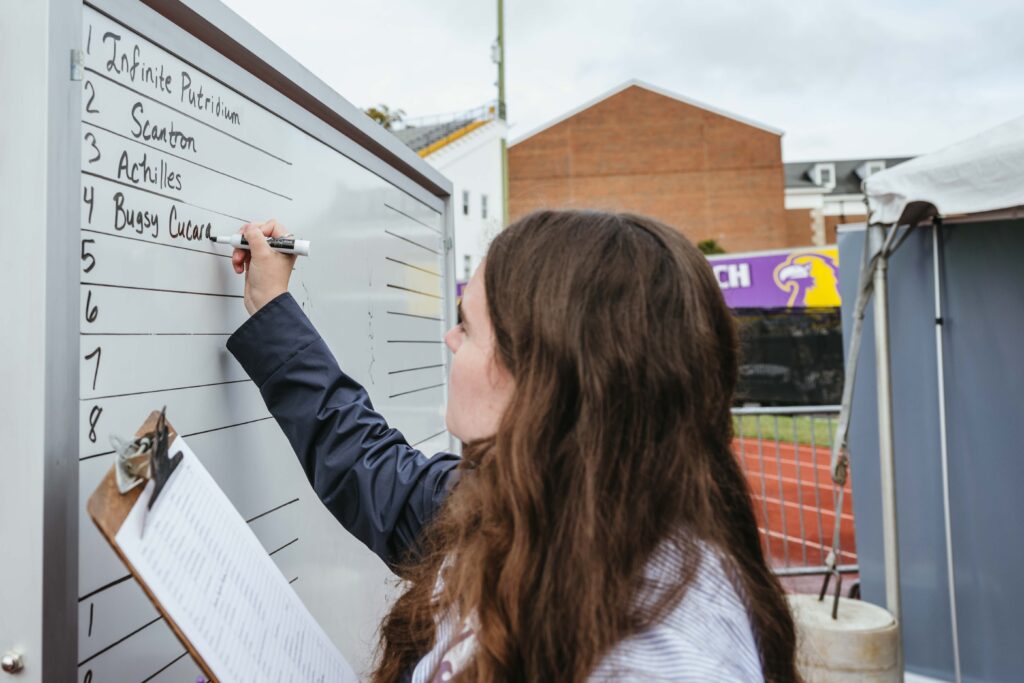

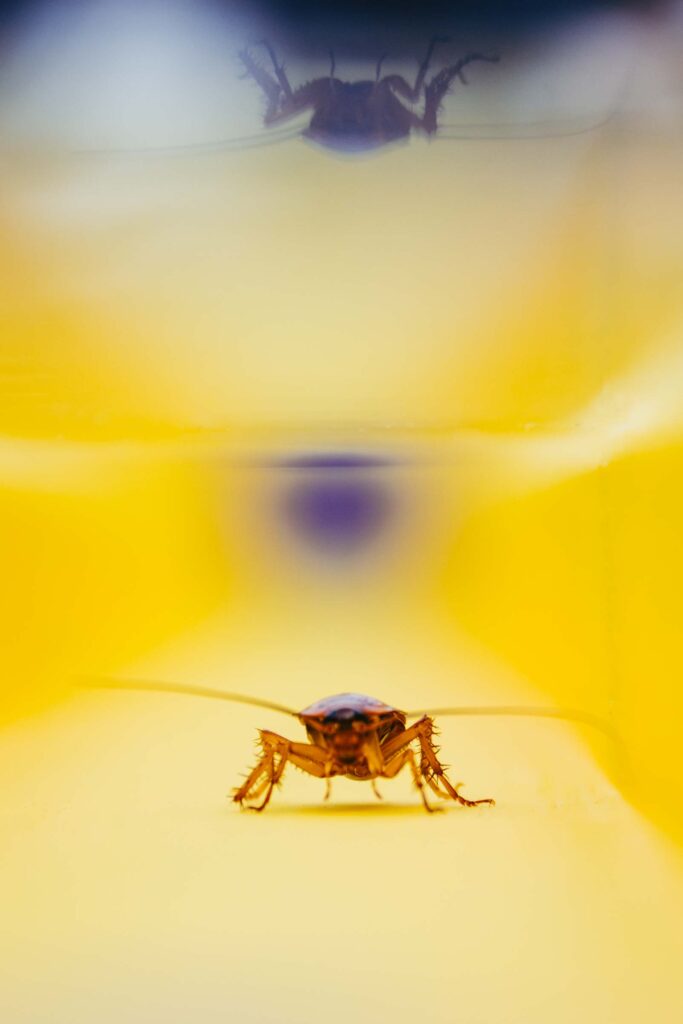
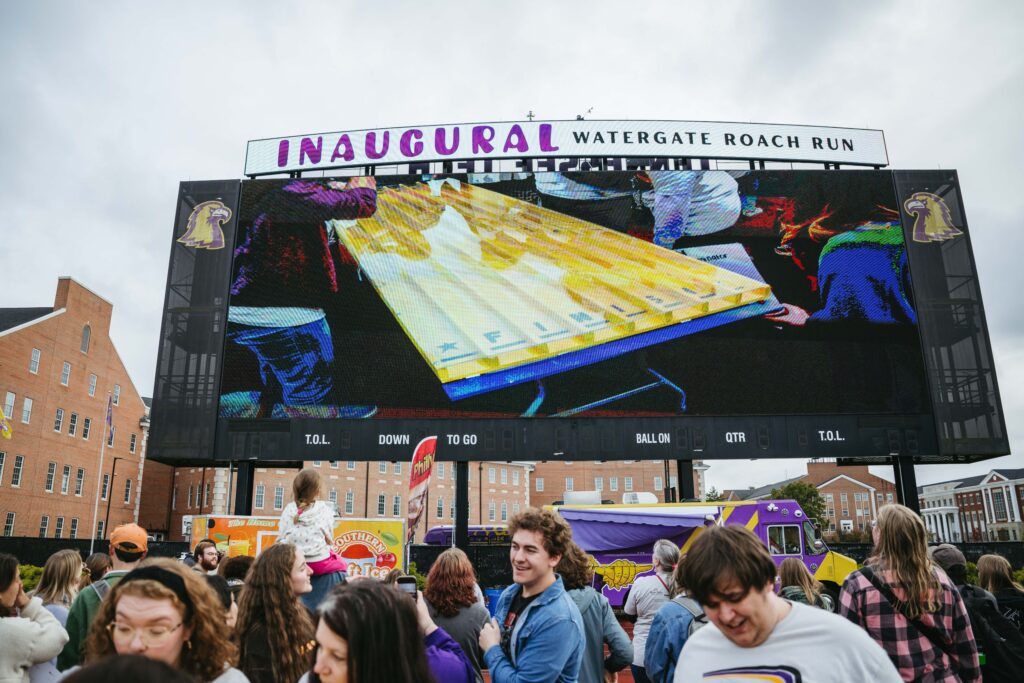
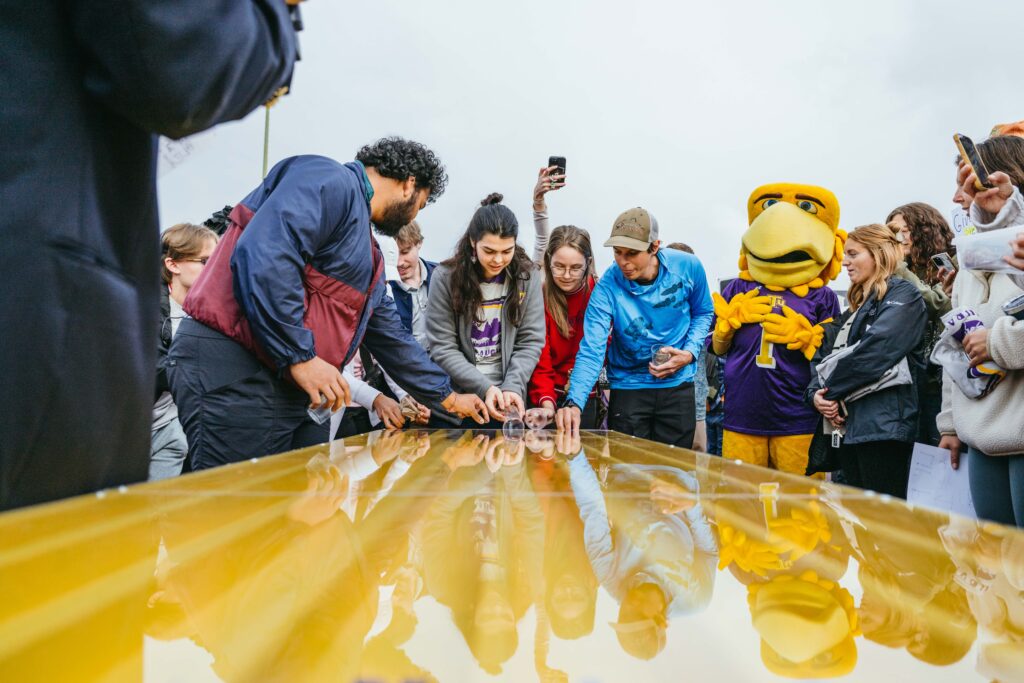
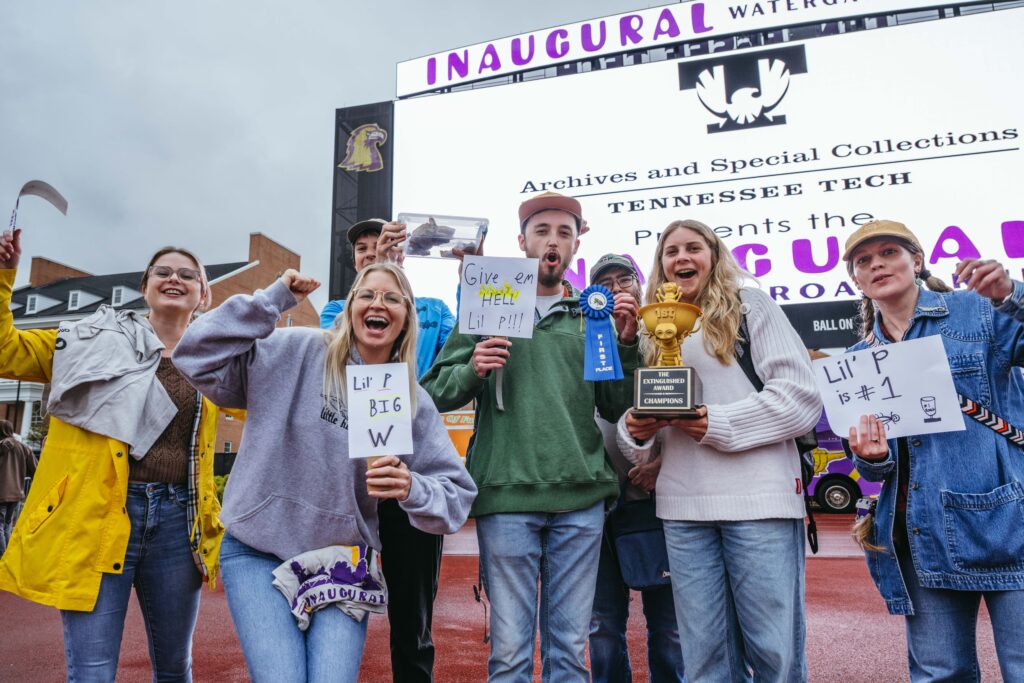
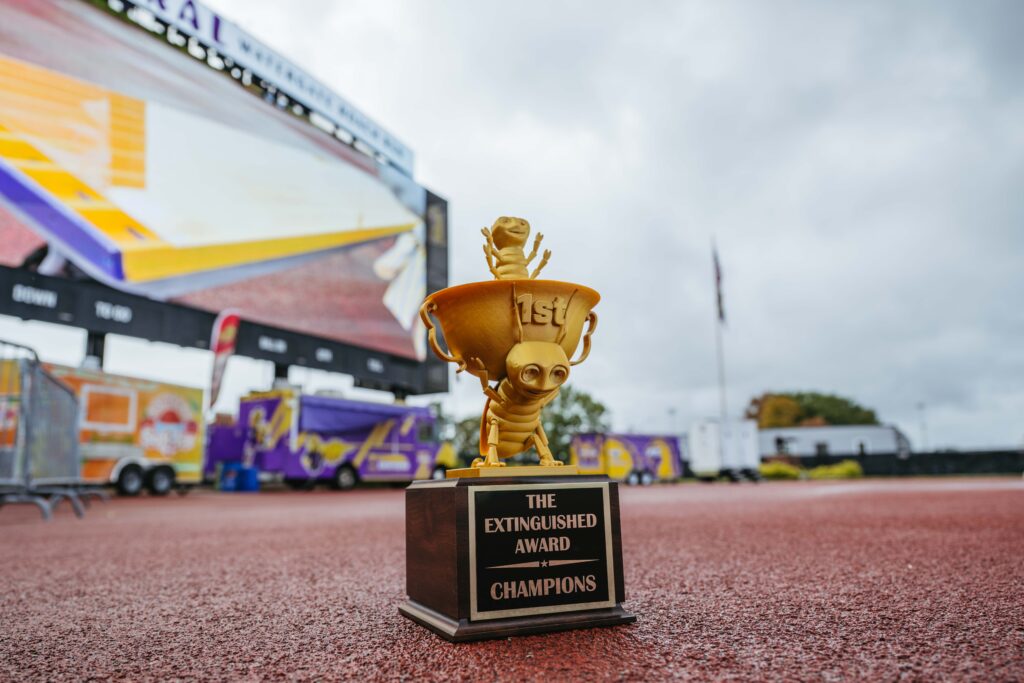
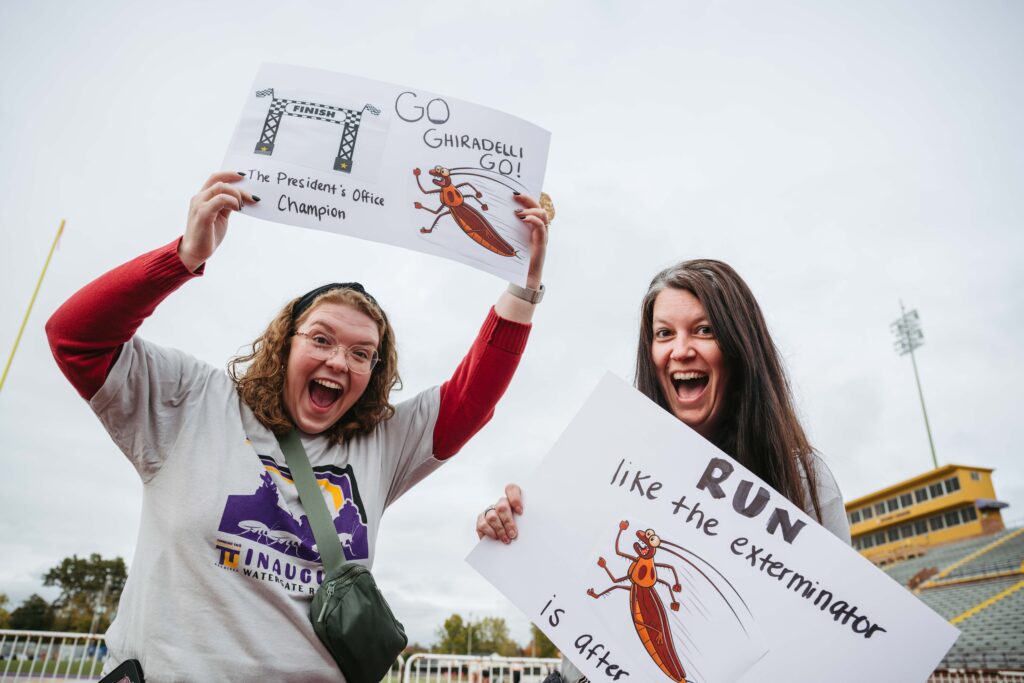
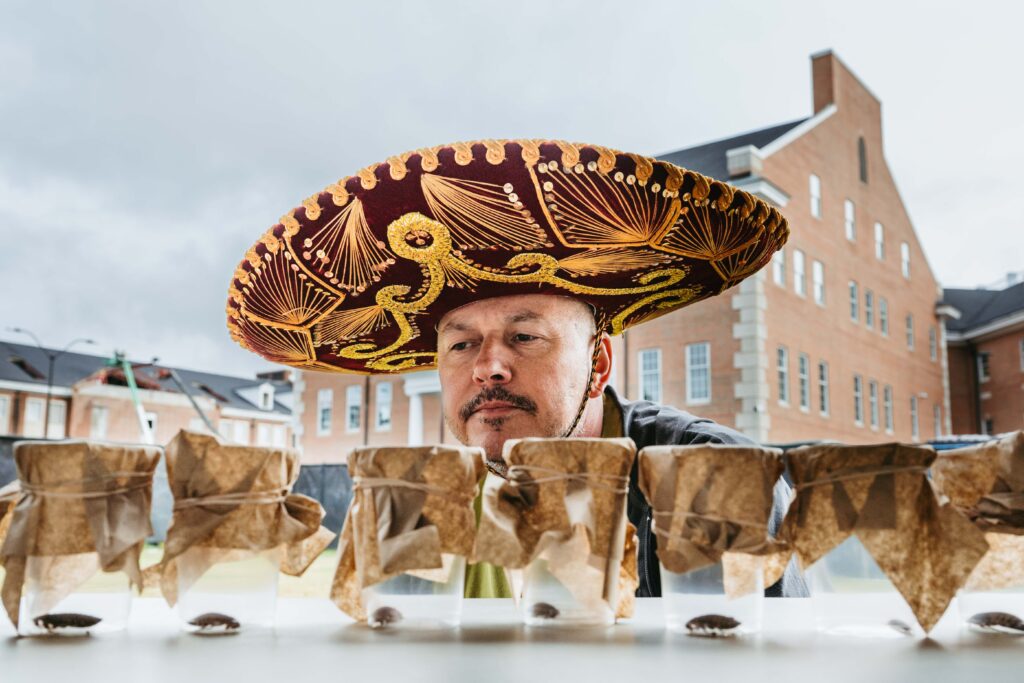
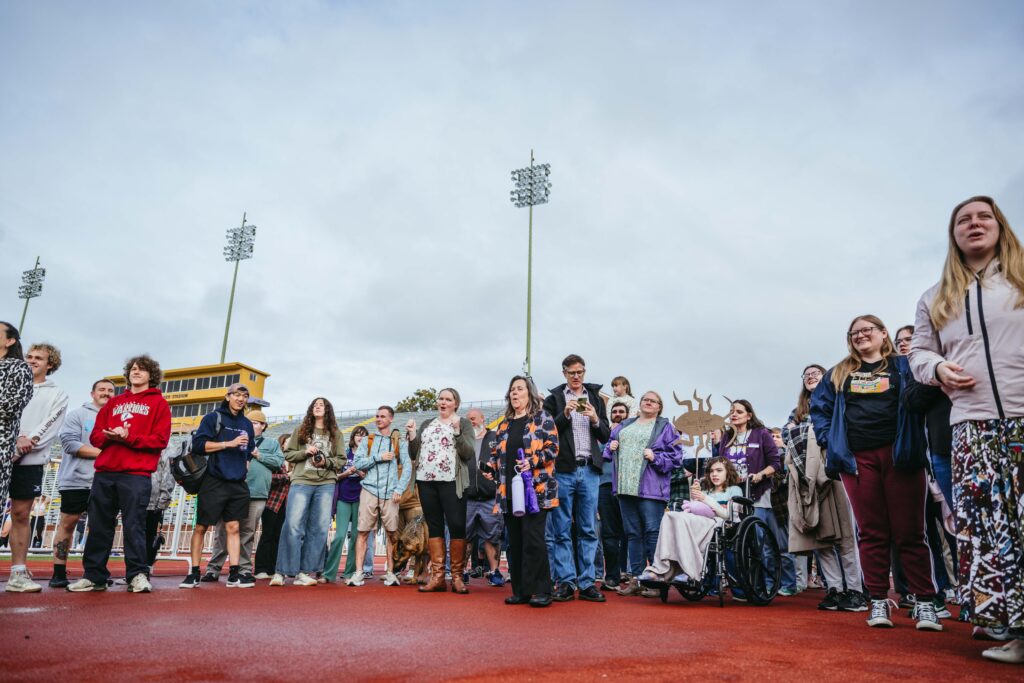
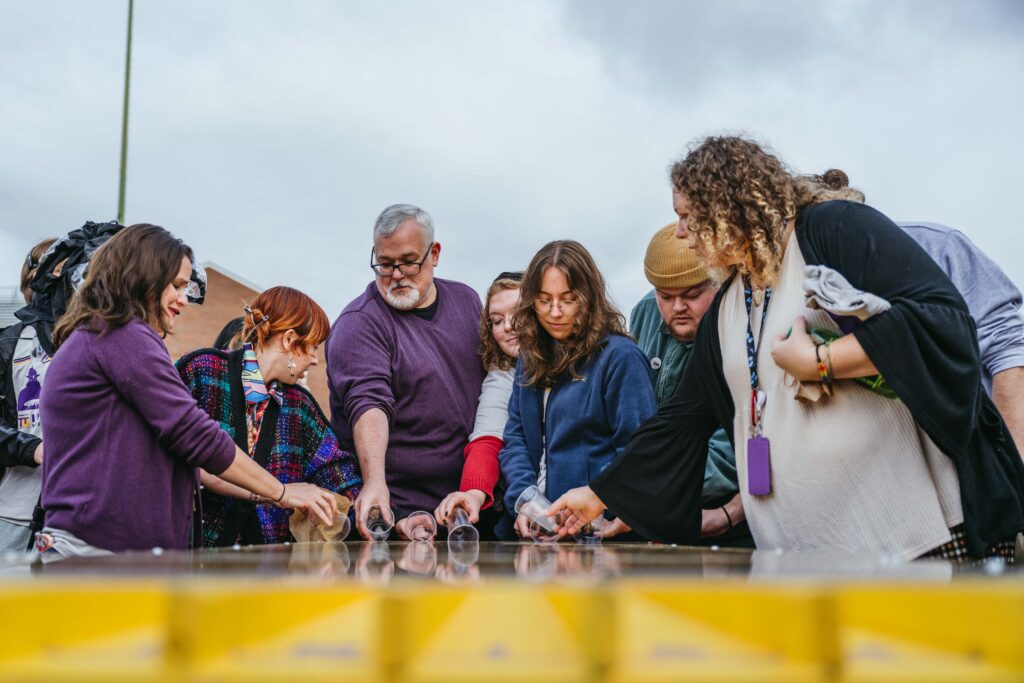
Posted in Uncategorized
Tagged Alumni, BumperStickers, CockroachRacing, Development, ExtinguishedAward, Outreach, TechYeah, WatergateDay
Comments Off on Archives Turns Campus History into New Tradition with Inaugural Watergate Roach Run
Tennessee Tech Archives hosts documentary about FBI’s most wanted Billy Dean Anderson for TWO nights!
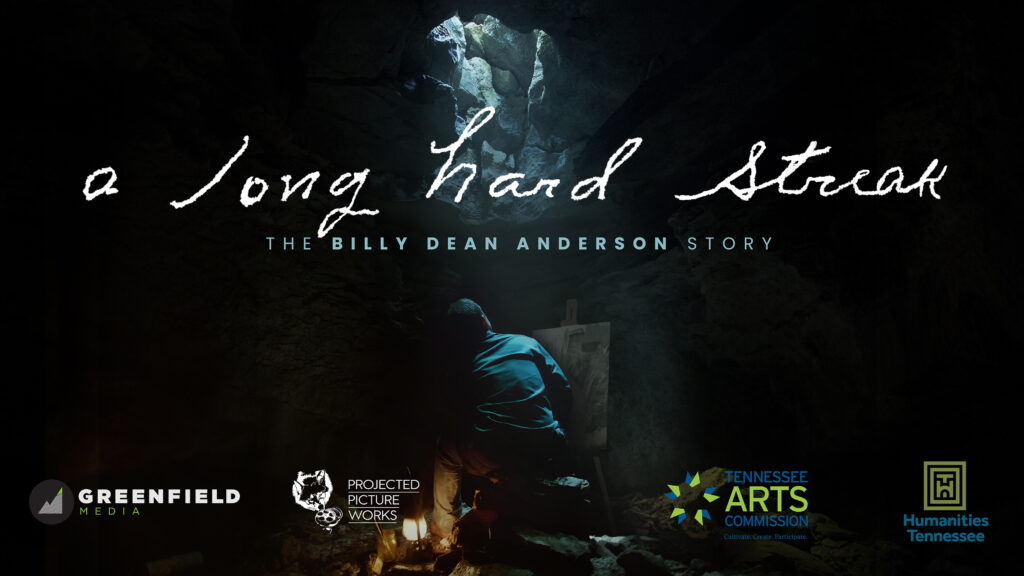
Movie poster image for “A Long Hard Streak: The Billy Dean Anderson Story.” The image depicts a man in a cave, painting on a canvas.
“A Long Hard Streak” by Director/Producer Scott Rabideau
Cookeville, TN.
Tennessee Tech Archives and Special Collections, in collaboration with WCTE and Director Scott Rabideau, invites students and the public to an exciting documentary screening that explores the story of Billie Dean Anderson of Fentress County —an Appalachian artist and one of the FBI’s most wanted men.
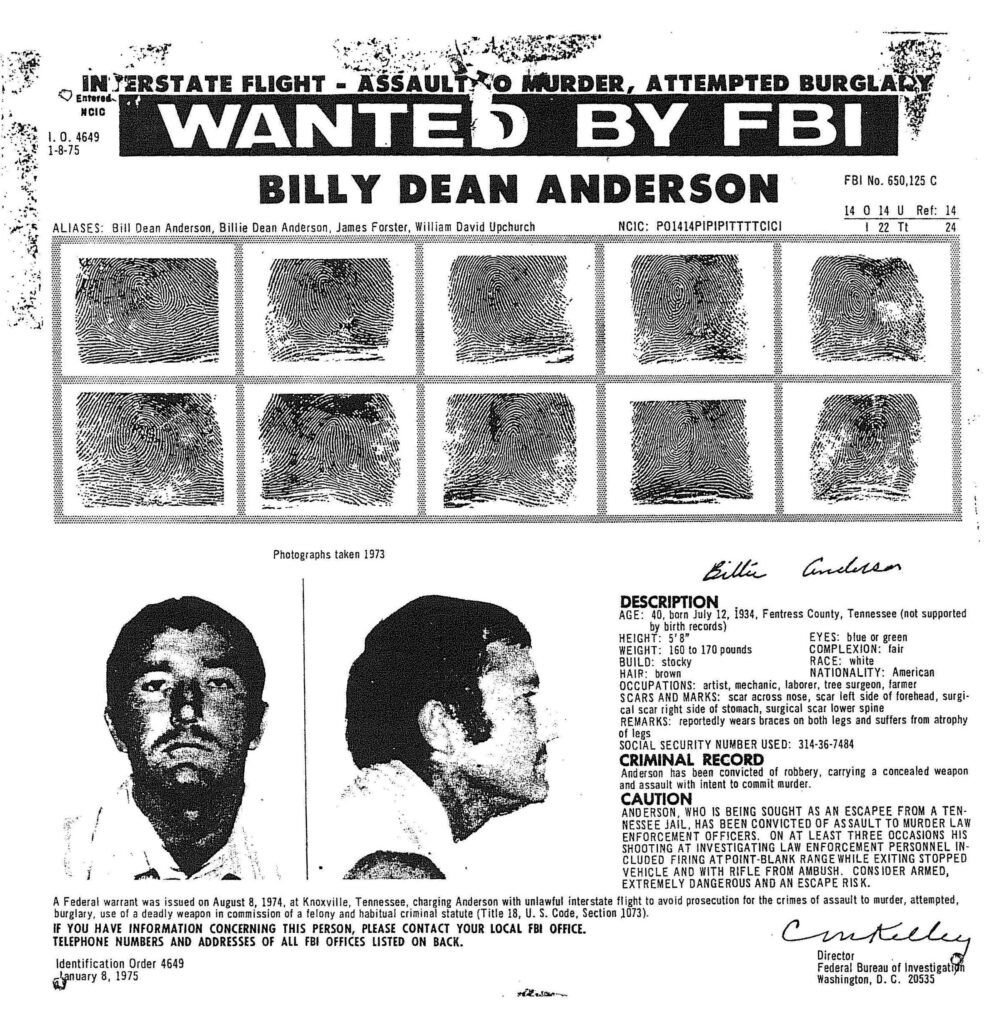
Tech Archives will offer two events: one on October 1 at 5:00 pm at Bell Hall 282, and another on October 2 at 6:00 pm at the Cookeville Performing Arts Center. Both events offer attendees the chance to interact with Billy Dean Anderson’s artwork and the film’s director and producer. The October 2 event will also feature a panel including Scott Rabideau, President/CEO of WCTE, Avery Hutchins, and Historian Dr. Troy Smith. These experts will offer insight into the making of the film, local film-making, Middle Tennessee historical narratives, and the impact of Anderson’s life. Kay Wood’s “Billy Dean Anderson: A Criminal Life” will be available for purchase.
The documentary offers a glimpse into Anderson’s life, revealing his personal struggles, trauma, and creativity. The film explores broader themes of identity, rebellion, and the power of storytelling, set in rural Tennessee.
Here’s what to know about the event:
Tennessee Tech, Bell Hall 282, October 1, 5 PM, featuring Director Scott Rabideu and the artwork of Anderson.
Cookeville Performing Arts Center, October 2, 6:00 PM, panel and Q&A featuring: Director Scott Rabideu, President/CEO WCTE, Avery Hutchins, Historian Dr. Troy Smith, and Biographer Kay Wood. Featuring the artwork of Anderson.
For further information, contact: (931)372-3849
Posted in Uncategorized
Comments Off on Tennessee Tech Archives hosts documentary about FBI’s most wanted Billy Dean Anderson for TWO nights!
Upcoming Archives’ Events Series!
Tennessee Tech Archives is proud to present an event lineup for the 2025–2026 academic year, each one celebrating local history, storytelling, and the arts. We invite you to join our free community and Tech events, and to even become a sponsor to help us host these events and future ones. Sponsorship supports Tech Archives in preserving and sharing the past of our community and Middle Tennessee, while also inspiring the future.
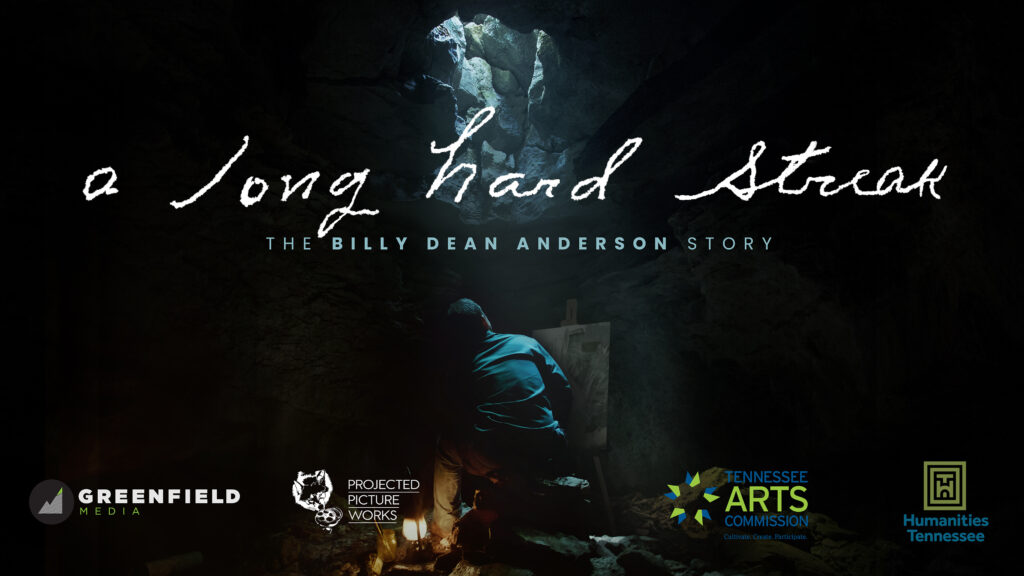
Film Series: A Long Hard Streak – October 1 at 5 PM at Bell Hall 282, Tennessee Tech, and October 2 at 6 PM at Cookeville Performing Arts Center
Join us for a special screening of the documentary “A Long Hard Streak,“ in partnership with WCTE, which explores the life and legacy of Billy Dean Anderson, a fugitive from Fentress County who became one of the FBI’s most wanted criminals. The film showcases Anderson’s artwork, offering a rare glimpse into the creative mind behind the folk antihero. Anderson’s story reflects the culture and history of Appalachia in the 20th century. A Q&A with filmmaker Scott Rabideau, WCTE’s Avery Hutchins, and historians Dr. Troy Smith will follow the October 2nd event.
Inaugural Watergate Roach Run – October 28 at 4 PM at Tucker Stadium
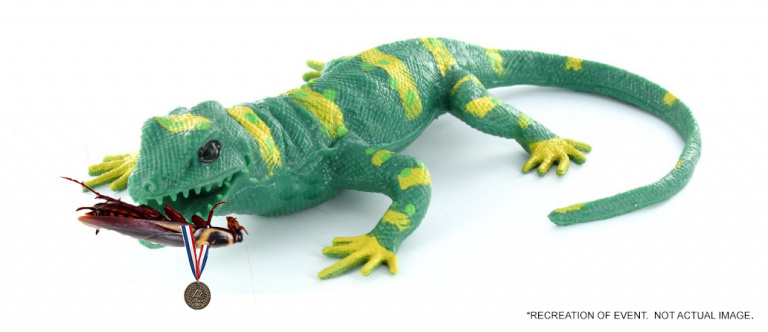
In 1986, Tennessee Tech made national headlines when its cockroach athlete, Watergate, won the Great American Bug Race in Florida. Found just minutes before the deadline by Oracle staff in Miller Hall, Watergate was shipped in a film canister over 800 miles to Palm Beach Atlantic College. Against all odds, Watergate won the race in just two seconds, beating competitors from across the U.S. and Canada. Tragically, he was eaten by a lizard shortly after, but his legacy had only just begun.
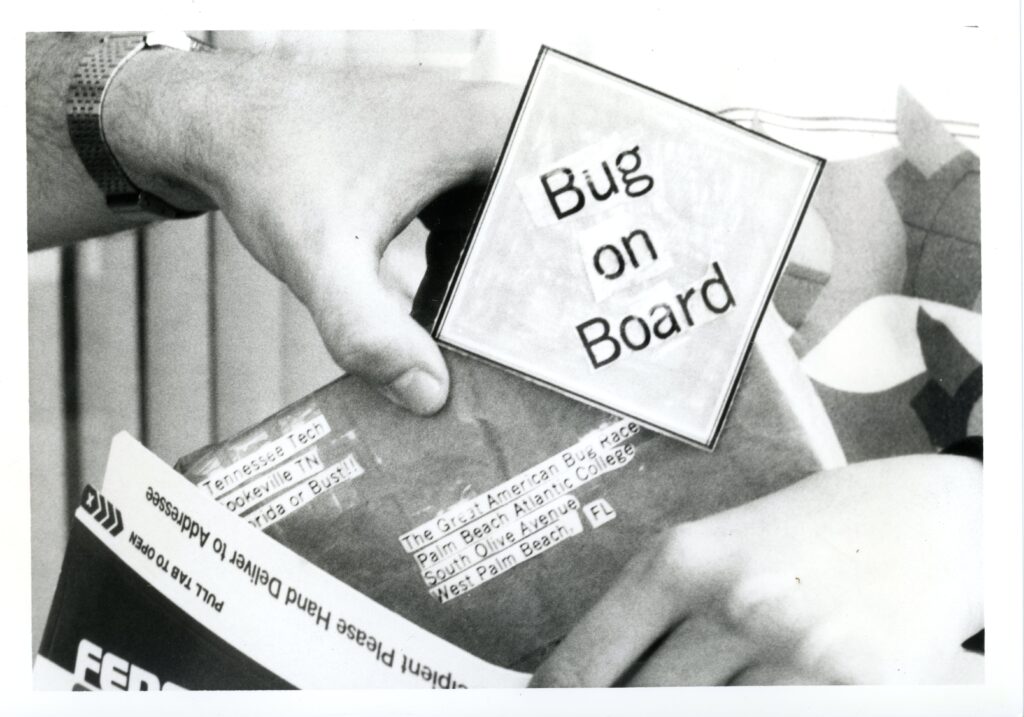
packed in a mailer addressed to West Palm Beach, Florida.
The campus responded with a memorial service attended by over 1,000 students dressed in black. President Wallace Prescott declared October 28 as Watergate Day, and the Alumni Association awarded Watergate the esteemed “Extinguished Alumni Award.” The event became a symbol of Tech’s resilience, creativity, and humor during a rough sports season.
This year’s Watergate Roach Run revives that legacy with a race event where departments compete for the title of fastest cockroach. It’s designed to reignite a historical tradition, provide laughs, and foster camaraderie among students and departments, tying the past to the present in a unique Tennessee Tech way.
For race details, follow this link: https://sites.tntech.edu/archives/2025/08/22/watergate-roach-race-rules-and-regulation/
For Tennessee Tech departments, student clubs, and organizations, register your cockroach athlete by following this link: https://tntech.co1.qualtrics.com/jfe/form/SV_0VyWE5xR7MMMtT0
Archives, Creatively Speaking – March 2026
This event celebrates the power of art and storytelling. Students will create original works, paintings, poetry, and narratives based on themes selected by the Archives and utilizing the Archives’ unique resources. It’s a showcase of student creativity utilizing historical resources in new and inventive ways. More information about this event will be available soon!
Posted in Uncategorized
Comments Off on Upcoming Archives’ Events Series!
Watergate Roach Race Rules and Regulation
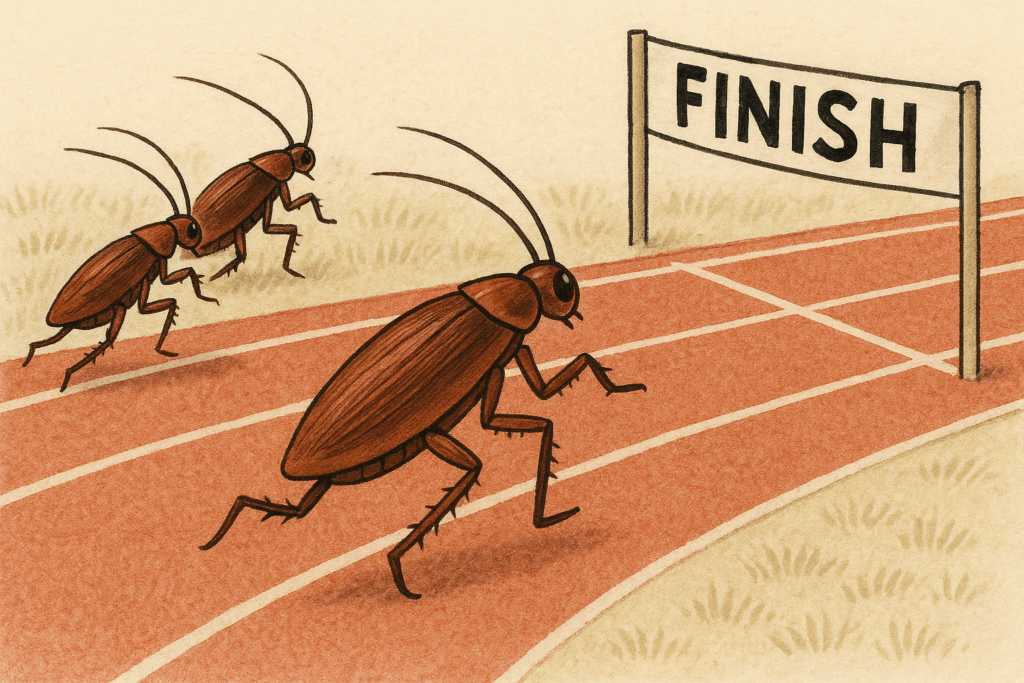
Date & Time: October 28 at 4 p.m.
Location: Tennessee Tech Campus Tucker Stadium
Hosted by: Archives & Special Collections
Race Format
- Each participating department/student club/organization selects or brings one roach athlete to represent them. These can be homegrown roaches or roaches selected from those available at the event (Dubia roaches).
- Roaches will race 8 feet on a foot track. There will be 7 races with 8 contenders each, and an 8th race will determine the overall winner.
- The race is a sprint-fastest cockroach wins!
- All roach athletes and departments must register to participate in the run by 12:00 p.m. on race day, October 28. Earlier registration guarantees participation.
- Registration is here: https://tntech.co1.qualtrics.com/jfe/form/SV_0VyWE5xR7MMMtT0
Roach Guidelines
- Roaches must be real, live insects (no mechanical or fake entries).
- Each roach must be safely contained before the race and handled humanely.
- Roaches must be named for identification and announcement (no paint or harmful substances). A biography is encouraged.
- Roach coaches will be required to “release” their roach on the racetrack at the start of the race.
Winning Criteria
- There will be seven races and an 8th final race to determine the overall champion. If a roach wins one of the initial races, it will compete in the final race for the title of overall champion and the “Extinguished Award”.
- The first roach to fully cross the finish line wins.
- In case of a tie, a re-race will be held between the top contenders.
- The overall winning roach athlete and its department will be the holder of “The Extinguished Award” until the 2nd Annual Watergate Roach Race, where the trophy will be given to the next winner.
Spirit & Camaraderie
- Departments are encouraged to cheer, display signs, and show team spirit.
- Costumes and themed attire are welcome (for humans, not roaches!).
- The event is designed to be fun and filled with Tennessee Tech pride. Bring a good sense of humor.
- Share about your roach athlete and roach training on your social media and tag the Tennessee Tech Archives and Special Collections.
Safety & Fairness
- No touching, guiding, or interfering with roaches during the race.
- Judges’ decisions are final.
- Cockroach athletes are strictly prohibited from using performance-enhancing drugs. Any cockroach found using or testing positive for banned substances will be disqualified from the competition.
Posted in Uncategorized
1 Comment
Summer “Break” in the Tech Archives
It is officially summer, and Tennessee Tech Archives would like to share some updates on our summer projects! Students may be on vacation, but the work in Tennessee Tech Archives does not slow down for summer break!
Renovation Updates
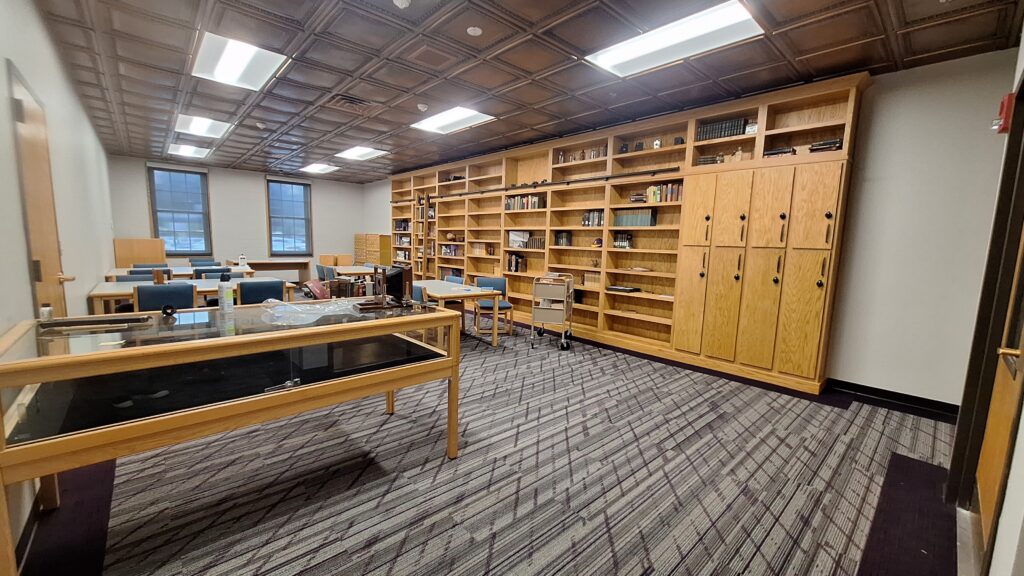
This last year, Tech Archives’ staff members were temporarily located while the archives workroom and reading room were renovated. The renovations, generously funded by Tech alums Scott and Mary Alice Edwards, sought to give the reading room a sophistication worthy of Tennessee Tech’s collections and create a better learning environment for students in the archives. The space is coming together, and we are finalizing details such as pictures, upholstery, and table lamps. We will have an open house for the Week of Welcome in August to show students and the public the new facility. We are incredibly excited to share the final space with the public!
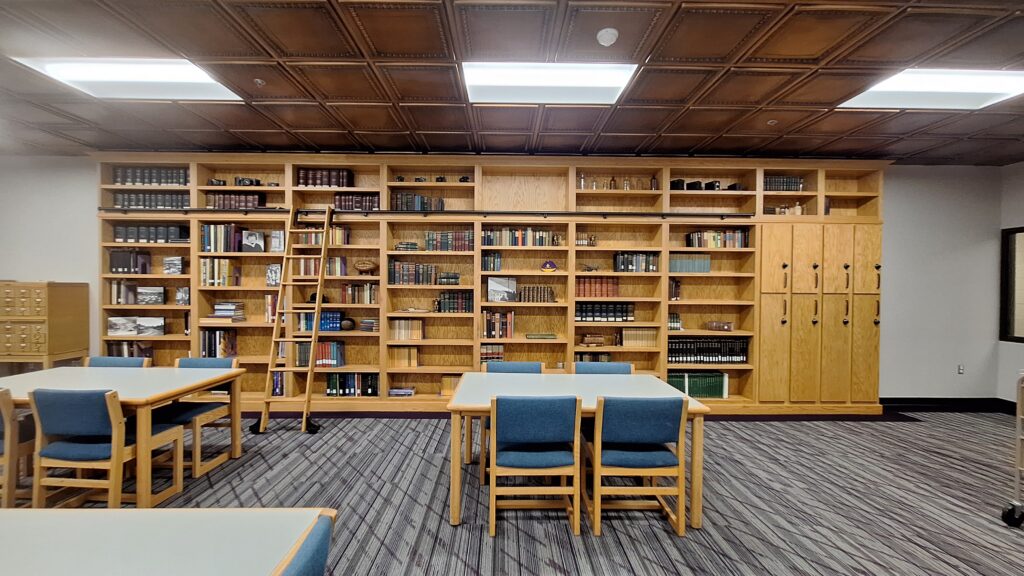
Community Archives Project
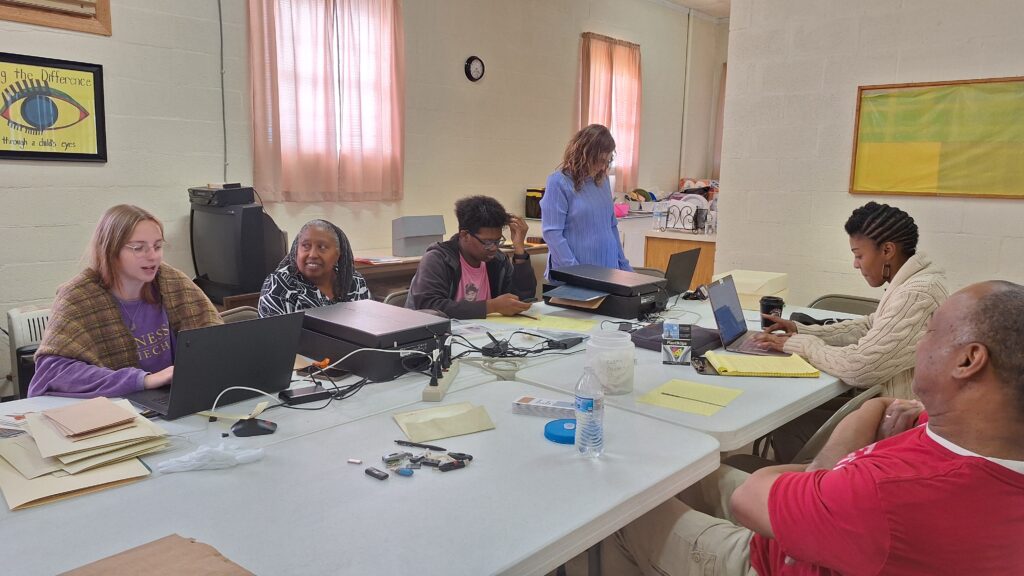
Funded by Tennessee Tech’s Rural Reimagined grant, Tech Archives, Dr. Krystal Akehinmi, and the West End Connection began the “Empowering Voices” project, which aimed to create an archive for Cookeville’s historic black community in the West End. The grant supported the purchase of scanners and recorders along with the assistance of tremendous interns Ronaldo Malcom, Aaron Ross, Cheyenne Douthitt, Anna Grace Herrin, Kelley Fluker, and Laramie Eisenstein. The final project will create an enduring community archive that will serve as a testament to the resilience and vibrancy of the West End community.
WCTE Digitization
Tech Archives is assisting WCTE, the local PBS station, with its digitization project. Thanks to a generous grant from the American Archive for Public Broadcasting, more than 1500 programs from Cookeville’s WCTE will soon be available for streaming online at the American Archive for Public Broadcasting. Stay tuned for new content and check out the materials that are already digitized here: https://americanarchive.org/catalog?f%5Bcontributing_organizations%5D%5B%5D=WCTE+%28TN%29&f[access_types][]=online
New Scrapbook Donation
Lastly, we received a scrapbook this Spring from Linda Rollins. The scrapbook was her mother-in-law’s, Doris Wiley Rollins, a Tennessee Tech student in the early 1930s. She was the editor of The Oracle and Miss Tech during her time at Tennessee Tech. To see this unique perspective of Tennessee Tech in the 1930s from Wiley Rollins, follow this link: https://tntech.access.preservica.com/uncategorized/IO_4406bcd8-20d8-4d5a-a666-caef14ba1f13/
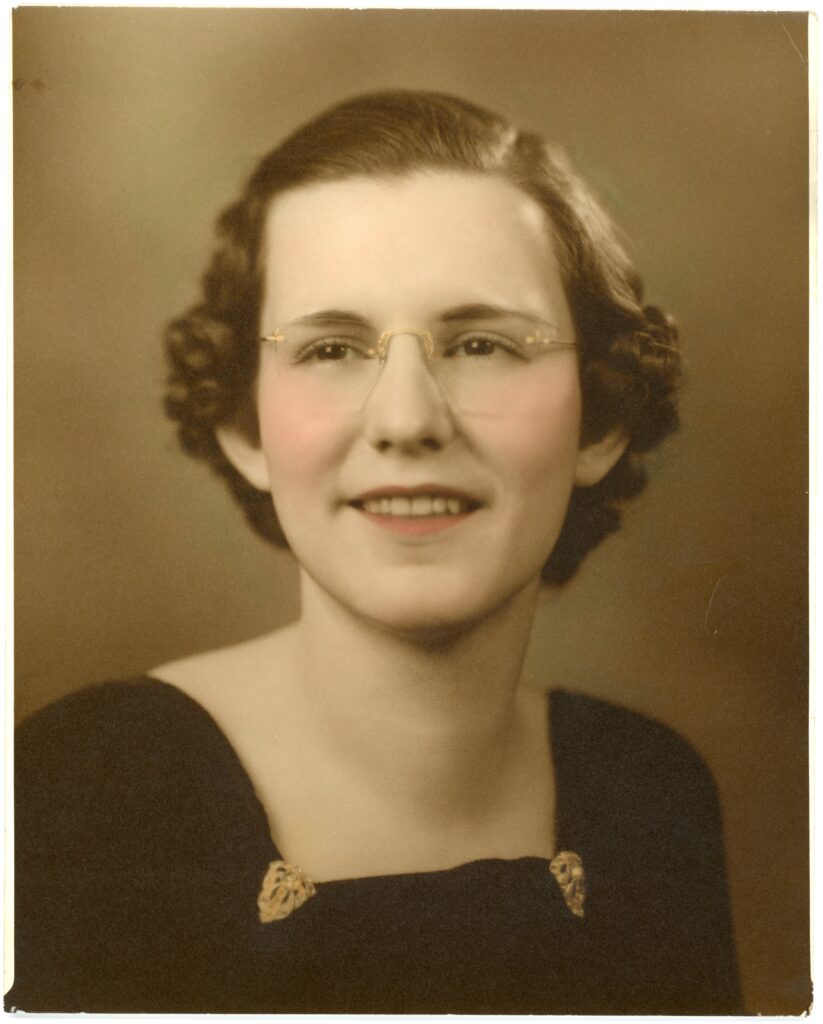
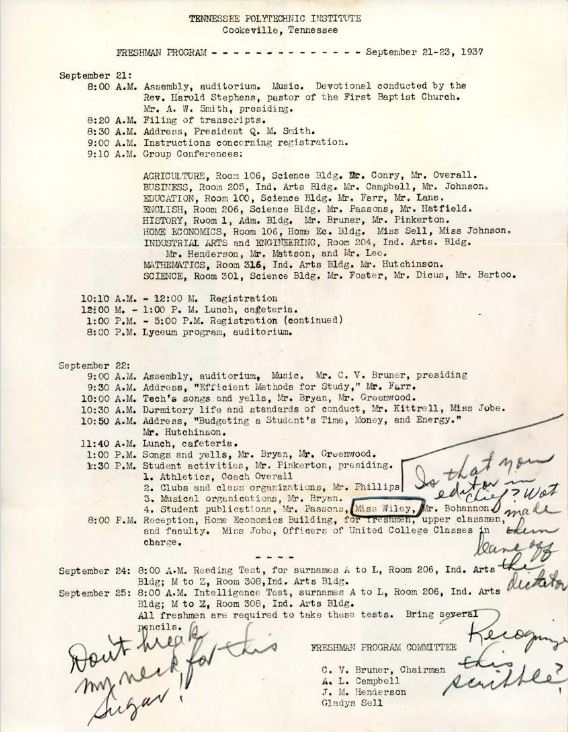
We look forward to sharing more updates and engaging with our community. Thank you for your continued support of Tennessee Tech Archives!
Posted in Digital Preservation, General, Internships, Tech History, Uncategorized
Comments Off on Summer “Break” in the Tech Archives
When No Roads Lead Home: WCTE’s “Wilder-Davidson Project”
by August Pitcher, Archive Intern

From 1909 to 1939, Fentress County was home to a sprawling coal-mining community. Wilder-Davidson, as the region was known, encompassed the towns of Wilder, Davidson, Crawford, Twinton, and Highland. The Fentress County Coal and Coke Company’s owner, John T. Wilder, established the town in 1902, and its population increased dramatically as the railroad system made its way across the United States. By 1909, over two thousand people lived in Wilder alone. Now, the town is nearly deserted. What happened to Wilder-Davidson?
Wilder-Davidson operated as a company town during the “Coal Boom” of the early twentieth century. Though Fentress County Coal and Coke Co. owned nearly everything in the town, workers were compensated well in the early years. Miners could afford luxuries like radios and cars, and their families enjoyed a strong school system, religious community, and social activities. Former miner and Wilder resident Tom Lowery described the town as safe and close-knit, saying “women were respected a great deal” and “people slept with the doors unlocked.”
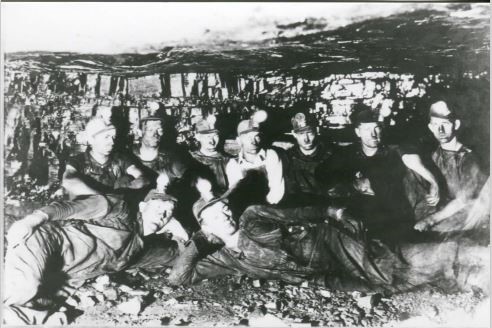
Yet, the friendly Appalachian town was not perfect. Miners faced dangerous working conditions daily as they labored in mines filled with coal dust, methane gas, and explosives. Several lost their lives or limbs in accidents, and many suffered long-term health effects (like ‘black lung disease’) long after their time in the mines. As the nation’s economy suffered during the Great Depression, workers saw dramatic pay cuts and began to organize in protest. The union’s first strike occurred in 1924 and lasted a few months before the company agreed to worker demands, though pay was still not back to pre-Depression rates. Company/worker relations stabilized until February 13th, 1928, when a powder keg was struck and killed four miners. After the tragedy, workers began to discuss organizing again, as they believed they were not fairly compensated for putting their lives on the line daily.
In 1931, miner Byron “Barney” Graham was elected union president just before the company would issue three major pay cuts. The union was outraged and went on strike on July 9, 1932. Out-of-town, non-union miners (Called “scabs” by union workers) worked until the mines were officially reopened on October 19. Strikebreakers and National Guard units accompanied miners, but workers on strike sought to rid the mines of these groups. They blew up stretches of railroad, destroyed a tipple (structure to load coal onto transportation) worth $20,000, and shot at strikebreakers and mine guards. One Davidson mine superintendent was killed, and the company realized it had little control over its employees.
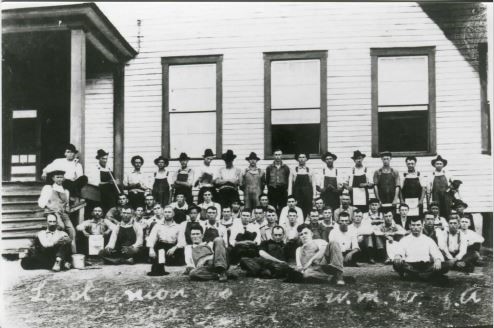
On April 30, 1933, union president Barney Graham was killed on the steps of the company store by Jack “Shorty” Green, a mine guard. Though a few witnesses were present, the exact events and motives of the murder have been muddled after decades of speculation. Despite the disagreement in details by many former residents, most agree that Graham’s death signified the end of the strike. For a few months after, many miners hoped that conditions would improve but left Wilder-Davidson when they did not. Many “blacklisted” miners were able to find government jobs after the National Labor Relations Act of 1935 was passed, granting union members protection from anti-union policies from employers. The company never fully recovered from the destruction caused by the strike and worker shortage, causing the town to dissolve slowly. Some mining activity continued until the 1950s when Fentress Coal and Coke Company abandoned Wilder-Davidson and moved its headquarters to Monterey, Tennessee. By the 1970s, much of what had once been an active and vibrant community had been destroyed.
“The stories of former residents of Wilder-Davidson are an incredibly powerful reminder that history is built on lived experiences–not just words on a page.”
On March 1st, 1984, Dr. Homer Kemp and a research team from the Upper Cumberland Humanities and Social Sciences Institute at Tennessee Technological University submitted a proposal to the Tennessee Committee for the Humanities. The proposed project would research the history of Wilder primarily through the collection of former residents’ oral histories. The Wilder-Davidson project sought to preserve the town’s legacy and those who lived in it using primary sources and scholarly writings on coal mining. The Committee approved the project, which ran from July 20, 1984, to February 28, 1986. The project made the Wilder-Davidson Project records possible through the work of a large team of interviewers, historical experts, camera operators, and the Cookeville PBS station (WCTE). The result of the project was The Wilder-Davidson Story: The End of An Era, a four-part documentary broadcast by WCTE on June 17, 1987.

My role in this project was to organize and catalog all materials, research the region’s history and the WCTE project, and prepare the collection for public access. Though all the records contain historical value, one story stuck out. Madge Alexander was born and raised in Wilder and had an active social life as a young woman. She went on to marry her neighborhood sweetheart, Charlie, and they enjoyed a happy life together. However, Charlie was working in the mines on the night of February 13, 1928, and was seriously injured in the blast. The injured were taken by train to Nashville, but it was too late. Charlie died a few days later. His last words to Madge were, “Oh woman, don’t you worry about me, I’ll be alright.” As Madge said in her 1985 interview, “It was horrible. I thought it would kill me; I really did. I was just 23 years old, and he was just 31. But you have to make a life and go on… I thought I would die, really, I did. You get over that terrible horror after a while, but you never really get over it.”
The stories of former residents of Wilder-Davidson are an incredibly powerful reminder that history is built on lived experiences–not just words on a page. Though the people who shared their experiences for the documentary have since passed away, their interviews have been digitized. They are available in Tennessee Tech’s digital collections by following this link. All four parts of the documentary, The Wilder Davidson Story: The End of an Era, can be found on the American Archive of Public Broadcasting website using this link. The finding aid for this collection is available at the following link.
Posted in Uncategorized
Comments Off on When No Roads Lead Home: WCTE’s “Wilder-Davidson Project”
Sally Crain-Jager: A Legacy of Art, Education, and Community Engagement
by Lucinda Morabito
Edited on March 21, 2024.
Sally Crain-Jager was an influential educator and arts advocate in the Upper Cumberland. Sally Lucile Bonham was born on October 7, 1938, to Mabel Lucile Rodgers and George Raymond Bonham in Enid, Garfield County, Oklahoma. In high school, she was a division one flutist in band and orchestra, earned a chair in the all-state band, and was invited to join the National Art Honor Society for scholarship in the visual arts.
Crain-Jager graduated from high school in 1956 and stayed in Enid for college, attending Phillips University. She was a member of the university band and orchestra, secretary to both, and was president of the Eta Chapter of the Tau Beta Sigma band sorority. 1960 was an eventful year for Crain-Jager. She was elected Phillipian Queen. She also received her bachelor’s in Fine Arts in Painting and married Robert Crain, who graduated from Phillips University in 1959.
After spending two years as a commercial artist in Bloomington, Indiana, Crain-Jager moved to Chattanooga and took a position as an art teacher. In addition to teaching art in Chattanooga and Hamilton County elementary and high schools, she became a coordinator of the art program and Hamilton County’s first educational television art teacher.
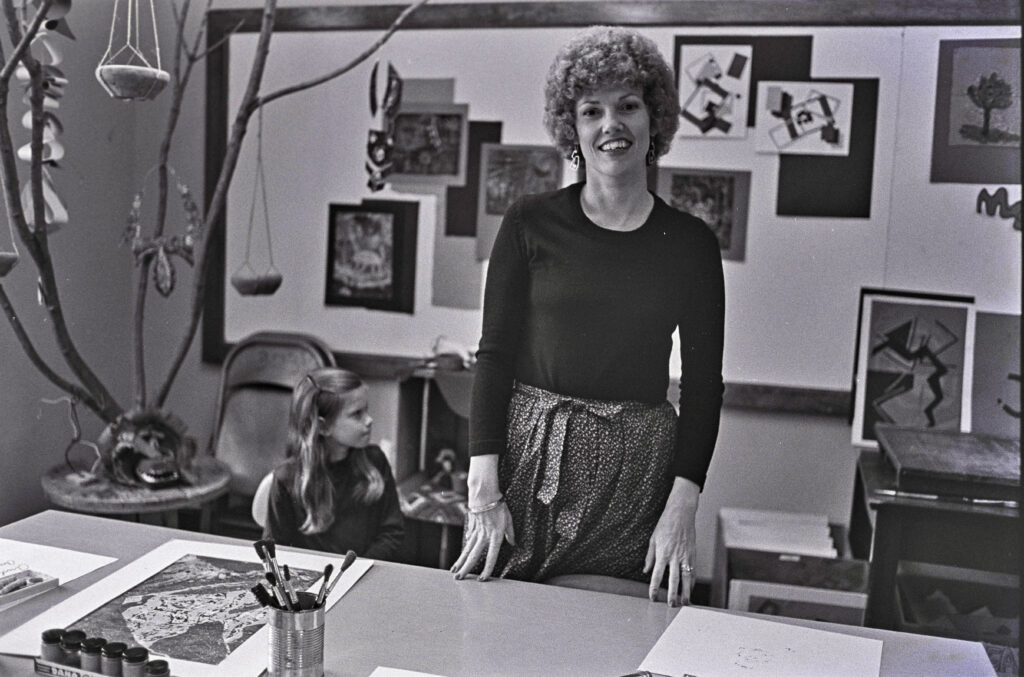
In 1967, Crain-Jager began working as an instructor for the Tennessee Tech Department of Elementary Education, and she transitioned to the Art and Music Department in the mid-1980s. Crain-Jager taught at Tech for over 30 years, progressing from instructor to eventually full professor and, when she retired in 2001, professor emeritus. During her time at Tennessee Tech, she taught elementary school art, design, art history, art appreciation, introduction to painting, and introduction to drawing.
Crain-Jager took an active role on campus. She was a driving force in creating Tech’s art education and painting degree programs. She chaired the University Art Committee for several years and was a key factor in establishing the Joan Derryberry Art Gallery. Crain-Jager co-founded the annual Bacchanal, which funds a scholarship endowment for Tennessee Tech art students, and created a tradition of summer art workshops for children and teens at the Appalachian Center for Crafts.
In addition to being an educator and academic advisor, she had the following responsibilities at different times during her tenure, including Director of the Appalachian Center for Crafts, the Program Coordinator for art education and painting degree programs, and the Director of Art Education.
One of the most notable accomplishments of her career is the TV program “Young at Art.” In 1975, Crain-Jager created videotaped art lessons to air over local CATV for grades three through six. Teachers in the schools were given lesson plans to accompany the telecasts. Over the years, this program reached at least 1,300 students. The success of the local “Young at Art” series was a stepping stone to national syndication. In 1980, Crain-Jager filmed 30 programs for third and fourth graders for the East Tennessee public television station WSJK. She was the creator, writer, co-producer, director, and teacher of the series. “Young at Art” was syndicated in up to 25 states.
Not only was Crain-Jager continuously involved in art education projects and consultations for local schools and organizations, but she also participated in many professional and state-wide organizations, such as a Muser for Tennesse Arts Academy Musings in 1994, the President of the Tennessee Art Education Association, a faculty member of the Tennessee Governor’s Schools, and the Chair of the Tennessee Arts Commission Exhibition.
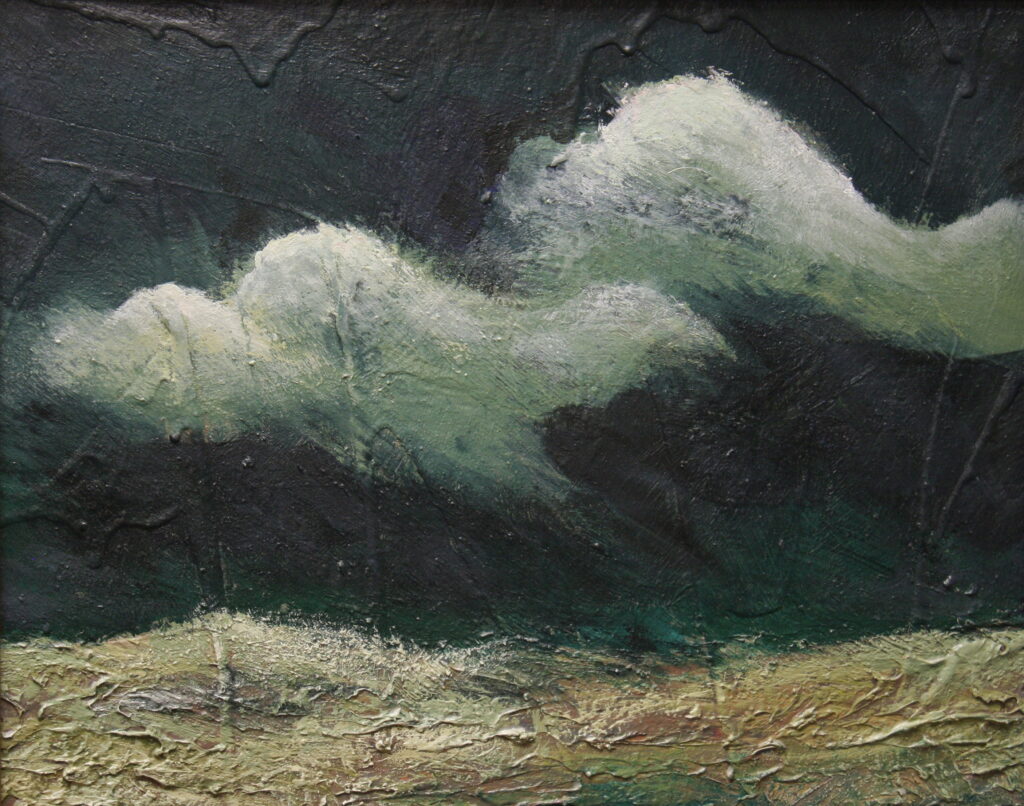
Crain-Jager regularly worked with arts and cultural activities and programs in the community. For example, she worked with local organizations and venues to arrange exhibitions of student artwork, create workshops and lectures for the public, and organize auctions for fundraising. Highlights from her community involvement include being President of the Cookeville Arts Council, set designer for the Cookeville Summer Theater, Chair of the Cookeville Regional Medical Center Foundation Art for Healing acquisition committee, and President of Friends of the Appalachian Center for Crafts following her retirement. Additionally, she wrote a bi-weekly question-and-answer column called “Art to Art” in the Putnam County Herald-Citizen and helped establish the annual Art Prowl in Cookeville, Tenn.

Crain-Jager received numerous honors and awards for her involvement and passion for art education and community arts. Some of the awards and honors she received were Outstanding Woman of the Year from Lambda Theta (1976), the School Bell Award from the Tennessee Education Association (1976), Outstanding University Professor from Phi Delta Kappa (1978), Tennessee Art Education Association’s Higher Education Art Educator of the Year (1993), the Joe W. Giles Lifetime Achievement Award from the Tennessee Arts Academy (2005),
After developing an interest in painting, Crain-Jager was a prolific painter for the rest of her life. She participated in numerous exhibits, exhibiting locally, regionally, and nationally. She worked in various styles but may be most known for her large, abstract, nature-based acrylic paintings. Landscapes often inspired her in Tennessee, the Southwest, and the Midwest.
Sally Crain-Jager had two children who shared her artistic talent: Barry Crain, an artist, and Brooke Martin, a Tech Alumnus and pianist. In 1992, Crain-Jager married Dr. Robert E. Jager, a composer and Tech music professor. Jager composed “The Sally Garden” as a wedding present and played it at their wedding. Crain-Jager retired in 2001. In 2009, Crain-Jager and Jager moved to Santa Fe, New Mexico.
They returned to Cookeville in 2011, and Crain-Jager taught at Nashville State Community College. At this time, she helped develop the art collection for the Art for Healing program at the Cookeville Regional Medical Center. Art for Healing created a permanent and growing art collection to comfort patients, visitors, and hospital personnel.
Sally Crain-Jager died in 2014. Crain-Jager interacted with and influenced numerous organizations and countless students. She has undoubtedly left a legacy. In 2015, Tennessee Tech hosted a commemorative exhibition to generate funding for a scholarship endowment, the Sally Crain-Jager Memorial Art Scholarship. In 2015, the community organized an exhibit, “Sally Forth … in Layers,” which provided additional funding for the scholarship endowment. She was posthumously awarded the first Cookeville Regional Charitable Foundation Champion Award (2015). Her work was also celebrated annually through numerous events that collaborated to create, including Cookeville’s Art Prowl and the Art for Healing program, the annual Bacchanal celebration, and the Sally Crain-Jager Student Art Exhibition at the Cookeville Performing Arts Center.
Primary Sources:
Art Round Tennessee. About Art Round Tennessee. https://www.artroundtennessee.com/about.
Cookeville Performing Arts Center (Facebook post). The 19th annual Sally Crain-Jager student art exhibition. April 25, 2023. https://fb.watch/k9vuih2yt2/.
Cookeville Regional Medical Center (via YouTube). Art for Healing (video). November 5, 2013. https://www.youtube.com/watch?v=4pIGv_Vaz08.
Cookeville Regional Medical Center Charitable Foundation. About Us, Foundation Champion Award. https://cookevilleregionalcharity.org/about-us/.
Cookeville Regional Medical Center Charitable Foundation. Art for Healing. https://cookevilleregionalcharity.org/foundation-program/.
Cookeville Regional Medical Center Foundation. John Bell, Executive Director. Email communications, Sally Crain-Jager paintings at CRMC. April 20, 2023.
Cookeville Regional Medical Center. Crazy with the Heat (photo of painting). Courtesy of John Bell.
Cookeville Regional Medical Center. Turbulence (photo of painting). Courtesy of John Bell.
Kingsport Times. T-N Staffer Wins ‘School Bell’ Prize. April 9, 1976, pp. 1, 10A.
Oklahoma City Times. Concert Set by Phillips. March 17, 1958, p. 7.
https://gateway.okhistory.org/ark:/67531/metadc2001410/m1/7/?q=oklahoma%20city%20times%20Concert%20Set%20by%20Phillips.%20March%2017,%201958,%20p.%207
Oklahoma City Times. Enid Band Festival’s First Winners Chosen. Vol. 61, No. 83, Ed. 1. May 12, 1950, p. 31. https://gateway.okhistory.org/ark:/67531/metadc1837554/m1/7/zoom/?q=%20%22sally%20bonham%22%20date%3A1938-1965&resolution=1.5&lat=6086.559545755386&lon=4519.360122680664.
Oklahoma City Times. Enidites Win High Honors. March 6, 1956, p. 5. https://gateway.okhistory.org/ark:/67531/metadc2000162/m1/5/?q=%20%22sally%20bonham%22%20date:1938-1965.
Phillips University. Phillipian Yearbook, 1957-58, p. 146. https://online.fliphtml5.com/moawu/rsfj/#p=1.
Phillips University. Phillipian Yearbook, 1959-60, pp. 51, 135, 179. https://online.fliphtml5.com/moawu/hbvm/#p=1.
Tennessee Arts Academy. Academy Awards. https://www.tnartsacademy.org/taa-year/academy-awards.
Tennessee Arts Academy. TAA Musings (general information). https://www.tnartsacademy.org/taa-year/musers.
Tennessee Arts Academy. Tennessee Arts Academy Archive Musers. https://uploads-ssl.webflow.com/601b7b4be501e3a142b5012f/6201f714db5eb233258cf1da_2021_TAAArchives_Musers.pdf.
Tennessee Radio Hall of Fame (via YouTube). Lin Folk interview with Sally Crain, President, Cookeville Arts Council (audio). Lin Folk’s Tennessee Kaleidoscope (Group X). Recording date unknown (between 1983–1987). Uploaded to YouTube December 12, 2017. https://www.youtube.com/watch?v=3an-yl02fvM.
Tennessee Radio Hall of Fame. Lin Folk Audio – Video Inventory. https://tennesseeradiohalloffame.wildapricot.org/resources/Documents/Lin_Folk_You_Tube_Index.pdf.
Tennessee Radio Hall of Fame. Lin Folk, Tennessee Kaleidoscope Programs Broadcast, 1983–1987. https://tennesseeradiohalloffame.wildapricot.org/resources/Documents/Lin%20Folk’s%20Tennessee%20Kaleidoscope%20Index.pdf.
Tennessee Tech press release announcing Sally Crain-Jager’s exhibit on display at the Appalachian Center for Craft. From Tennessee Tech Archives, Record Group 52 Office of Communications and Marketing records, Box 89, Folder 9, February 27, 2001.
Tennessee Tech press release describing community involvement in providing art scholarships to Tech students. From Tennessee Tech Archives, Record Group 52 Office of Communications and Marketing records, Box 89, Folder 9, September 20, 1995.
Tennessee Tech University Archives and Special Collections, Digital Collections. Third annual crafts auction set for May 8. Tech Times Faculty/Staff Newsletter, Volume 21, Number 32, May 13, 1983, p. 1. https://tntech.access.preservica.com/uncategorized/IO_7bfb568e-e464-4467-aa12-e39006a6d212/.
Tennessee Tech University Archives and Special Collections, Digital Collections. Sally Crain promoted to director of crafts center. Tech Times Faculty/Staff Newsletter, Volume 22, Number 1, September 9, 1983, pp. 1-2. https://tntech.access.preservica.com/uncategorized/IO_ae7ab99d-5268-44f3-be20-6de6ef3a3d90/.
Tennessee Tech University Archives and Special Collections, Digital Collections. Auction nets $11,400. Tech Times Faculty/Staff Newsletter, Volume 21, Number 29, April 22, 1983, p. 2. https://tntech.access.preservica.com/uncategorized/IO_7bfb568e-e464-4467-aa12-e39006a6d212/.
Tennessee Tech University Archives and Special Collections, Digital Collections. The Oracle. The Art of Painting. October 9, 1998, p. 5. https://tntech.access.preservica.com/uncategorized/IO_43b94a9d-3e28-4964-b324-943bedd30f19/.
Tennessee Tech University Archives and Special Collections, Digital Collections. Tech Notes. Sally Crain presented art workshop at International Reading Association Conference. Tech Times Faculty/Staff Newsletter, Volume 27, Number 3. September 30, 1988, p. 2. https://tntech.access.preservica.com/uncategorized/IO_c25b2d31-247e-47e6-a750-4d2933937865/.
Tennessee Tech University Archives and Special Collections, Digital Collections. 1986–1988 Bulletin. https://tntech.access.preservica.com/uncategorized/IO_302a94bb-2e76-45fa-a4c3-e3c25b236ecf/.
Tennessee Tech University Archives and Special Collections, Digital Collections. 1967–1968 Bulletin. https://tntech.access.preservica.com/uncategorized/IO_81df6ddd-3f65-4237-ab43-9f1ec23c6f26/.
Tennessee Tech University Archives and Special Collections, Digital Collections. 1980–1982 Bulletin. https://tntech.access.preservica.com/uncategorized/IO_ea850ddc-58f7-4cda-9ae3-8a7ea7aa43a7/.
Tennessee Tech University Archives and Special Collections, Digital Collections. 1975–1976 Bulletin. https://tntech.access.preservica.com/uncategorized/IO_716ca513-6c5c-44f0-be5c-343b74f3adde/.
Tennessee Tech University Archives and Special Collections, Digital Collections. Outstanding Educators. Photo clipped from 5-30-1978 Herald-Citizen. Record Group 52, Communications and Marketing, Office of records, May 17–31, 1978. Folder: Newspaper clippings. https://tntech.access.preservica.com/uncategorized/IO_e680178a-ebf9-4491-a1d2-e9f1c46ea372/.
Tennessee Tech University, Archives and Special Collections. [“Creative clay” for students of all ages.] Press Release, October 10, 1977. Record Group 52, Communications and Marketing, Office of records. Box 14, Folder 5.
Tennessee Tech University, Archives and Special Collections. [“Young at Art” airs across Tennessee.] Press Release, September 29, 1980. Record Group 52, Communications and Marketing, Office of records. Box 14, Folder 5.
Tennessee Tech University, Archives and Special Collections. [Large decorative posterboard eggs.] Press Release, April 6, 1977. Record Group 52, Communications and Marketing, Office of records. Box 14, Folder 5.
Tennessee Tech University, Archives and Special Collections. [Old-time mountain crafts lecture and exhibit by Sally Crain.] Press Release, September 15, 1978. Record Group 52, Communications and Marketing, Office of records. Box 14, Folder 5.
Tennessee Tech University, Archives and Special Collections. [Sally Crain receives Outstanding Woman of the Year award.] Press Release, April 28, 1976. Record Group 52, Communications and Marketing, Office of records. Box 14, Folder 5.
Tennessee Tech University, Archives and Special Collections. [Sally Crain nominated for 1980 Outstanding Faculty Awards.] Press Release, March 26, 1980. Record Group 52, Communications and Marketing, Office of records. Box 14, Folder 5.
Tennessee Tech University, Archives and Special Collections. [Seven public lectures and discussions on the heritage of the Upper Cumberland.] Press Release, November 13, 1975. Record Group 52, Communications and Marketing, Office of records. Box 14, Folder 5.
Tennessee Tech University, Archives and Special Collections. [Tennessee Tech once again is sponsoring a special videotape program for the “Young at Art.”] Press Release, January 16, 1975. Record Group 52, Communications and Marketing, Office of records. Box 14, Folder 5.
Tennessee Tech University, Archives and Special Collections. [Tennessee Tech students give art lessons at Jere Whitson Elementary School.] Press Release November 7, 1979. Record Group 52, Communications and Marketing, Office of records. Box 14, Folder 5.
Tennessee Tech University, Archives and Special Collections. [Videotaped art lessons aired over CATV.] Press Release, November 13, 1975. Record Group 52, Communications and Marketing, Office of records. Box 14, Folder 5.
Tennessee Tech University, Archives and Special Collections. Community Joins University to Provide Art Scholarships. Press Release, September 20, 1995. Record Group 52, Communications and Marketing, Office of records. Box 89, Folder 9.
Tennessee Tech University, Archives and Special Collections. Crain Receives Grant for Art Education Workshop. Press Release, February 2, 1989. Record Group 52, Communications and Marketing, Office of records. Box 89, Folder 9.
Tennessee Tech University, Archives and Special Collections. Manuscript, The Sally Garden, played at his wedding to Sally Lucile Bonham Crain (copy), 1992. Record Group 131, Robert E. Jager papers. Box 6, Folders 11.
Tennessee Tech University, Archives and Special Collections. Professor leads arts program in area schools. Press Release, February 27, 2001. Record Group 52, Communications and Marketing, Office of records. Box 89, Folder 9.
Tennessee Tech University, Archives and Special Collections. Tennessee Tech Professor Named Tennessee Art Association Art Education of the Year. Press Release, September 20, 1995. Record Group 52, Communications and Marketing, Office of records. Box 89, Folder 9.
Tennessee Tech University, Archives and Special Collections. TTU Professor Sally Crain-Jager’s Installation Exhibit on Display at Craft Center Until March 22. Press Release, February 27, 2001. Record Group 52, Communications and Marketing, Office of records. Box 89, Folder 9.
Tennessee Tech University, Archives and Special Collections. TTU Art Professor Named President of State Art Education Association. Press Release, April 1, 1992. Record Group 52, Communications and Marketing, Office of records. Box 89, Folder 9.
Tennessee Tech University. 2022-2023 Sally Crain-Jager Painting Scholarship Application. https://www.tntech.edu/fine-arts/pdf/art/scholarships/Sally-Crain-Jager-Painting-Scholarship.pdf.
Tennessee Tech University. Art show, reception to honor area artist, Tennessee Tech professor Sally Crain-Jager. April 21, 2015. https://www.tntech.edu/news/releases/art-show-reception-to-honor-area-artist-ttu-professor-sally-crain-jager.php.
Tennessee Tech University. Bacchanal 2022 is Sunday. October 18, 2022. https://www.tntech.edu/news/releases/22-23/bacchanal-2022-is-sunday.php.
Tennessee Tech University. Crain-Jager honored with exhibition in Joan Derryberry Art Gallery. October 25, 2016. https://www.tntech.edu/news/releases/crain-jager-honored-with-exhibition-in-joan-derryberry-art-gallery.php.
Tennessee Tech University. Recently Spotted Donors. Robert Jager, Professor Emeritus, School of Music. https://www.tntech.edu/univadv/giving/donor_spotlight.php.
Tennessee Tech University. Women’s History Month: Celebrating Women at Tennessee Tech. 1967, Sally Crain-Jager. https://www.tntech.edu/women/womens-history.php#the-2010s.
The Leaf-Chronicle. Mixed media exhibit to open Jan. 16 at Trahern Gallery. January 12, 1996, p. B9.
The Tennesseean. The art of teachers who teach art. July 31, 1998.
Upper Cumberland Business Journal. CRMC ‘Art for Healing’ program adds new works, funding sought for special display. https://www.ucbjournal.com/crmc-ae%cb%9cart-for-healingae-program-adds-new-works-funding-sought-for-special-display/.
WCTE TV. “Sally Forth … in Layers” exhibit. Discover the Upper Cumberland. Episode 104. http://wcte.lunchbox.pbs.org/discover/.
WCTE TV. The Upper Cumberland Camera. Interview with Sally Crain-Jager about David Campbell exhibit at Tennessee Tech University Art Gallery. Episode 1130, June 17, 1994. https://americanarchive.org/catalog/cpb-aacip_23-032280zr.
WCTE TV. Thirty years ago, the Upper Cumberland was abuzz about the first Great WCTE TV Auction. Close-Up: Public Television from the Upper Cumberland. May/June 2012. Volume 27, Number 3, p. 4. https://bento.cdn.pbs.org/hostedbento-prod/filer_public/WCTE/Documents/Close-Up/May%3AJune%202012%20CU.pdf.
Secondary Sources:
1stDibs.com. Silent Energy of Nature Mixed-Media by Sally Crain-Jager, 2010. https://www.1stdibs.com/furniture/wall-decorations/paintings/silent-energy-nature-mixed-media-sally-crain-jager-2010/id-f_19499762/.
Find a Grave. Sally Lucile Bonham Jager. https://www.findagrave.com/memorial/139109185/sally-lucile-jager.
Posted in General, Tech History, Uncategorized
Comments Off on Sally Crain-Jager: A Legacy of Art, Education, and Community Engagement
Exploring Yuletide Treasures: A Glimpse into the Upper Cumberland’s Historic Christmas Celebrations
by Megan Atkinson
If celebrated, regions and cultures vary greatly when they celebrate Christmas, and these traditions also differ throughout history. The Upper Cumberland celebrated Christmas differently than some in Tennessee’s and the United States’ more prosperous and populous areas, due to local traditions, resources, transportation, or financial means. Early Christmas was unlike the Christmas holiday of the late 20th century in all parts of the United States, but the Upper Cumberland adapted these changing traditions to fit with the region’s unique set of circumstances. Christmas focused on community, small presents, and homemade decorations. With few or no radios or televisions, shopping centers, Christmas lights, Christmas catalogs, internet, and Christmas television specials, the Christmas season in the Upper Cumberland was much simpler than in the 21st century.

Christmas customs we are familiar with are mostly derived from Victorian times, but the idea of a Christmas celebration began long before. In the fourth century, the Catholic Church made a holiday from the birth of Jesus. Pope Julius I selected December 25 and the custom, called Feast of the Nativity, grew. Christmas celebrations did not follow the original settlers to America due to Puritan beliefs, but instead, they came into favor beginning in the 1800s. The 1800s saw the appearance of Washington Irving’s publications and actions promoting the holiday, Charles Dickens’s A Christmas Carol (1843), Clement Clark Moore’s T’was the Night Before Christmas (1822), and Thomas Nast’s Santa lithograph in Harper’s Weekly (1862) – all which influenced modern Christmas traditions, including Santa, stockings, and gift giving. Santa Claus began public appearances around the 1890s. Although a long tradition in some cultures, the Christmas tree only gained wide acceptance after an illustration circulated in 1846’s Illustrated London News depicting Queen Victoria and Prince Albert with the royal family around a Christmas tree. The trend moved to the Eastern United States and with it came ornaments from German immigrants, who celebrated the tradition as early as the 1830s. Christmas was declared a federal holiday in the United States until 1870. Many people in the Upper Cumberland, due to their remoteness and income, did not participate in some modern holiday traditions until later. Still, they created traditions that were unique to the region.
Without television and few radios, newspapers took the forefront in spreading news and information regarding the Christmas holiday. Gift-giving began in the early 19th century and papers in the Upper Cumberland began advertising business’s holiday wares. Local newspapers, such as the Putnam County Herald, ran ads for gifts including a “box of fine chocolate” from Hickey Grocery Company, photographs from Harding Studio, and silverware and jewelry from Jere Whitson Hardware or Borden’s. Much like television programming features Christmas programming throughout the season in the 21st century, newspapers such as the Putnam County Herald published Christmas stories throughout the holiday. Authors and poets such as Clara Cox Epperson contributed stories of Christmas and the paper ran Christmas-related content from local and national publications, including songs, sermons, parables, poems, and stories about the origins of Christmas. The local newspaper was a major source of information and entertainment regarding the Christmas holiday in 19th and early 20th century Cookeville.
The local newspapers’ “society pages” acted as a Facebook “check-in” and an events page, allowing people to promote various social and cultural events in the area but also allowing for gossip. Announcements appeared in the Putnam County Herald such as “There will be entertainment and also a Christmas tree at Free Union, Dec. 24 Everybody invited -Santa,” “Miss Marie White is here to spend the holidays with her family,” and “Buck Ligon and family are spending Christmas with friends in Double Springs.” Announcements for events, gatherings, and visitation would come from across the Upper Cumberland including Hilham, Pleasant Hill, Monterey, Gainesboro, and Mayland, and were published for all readers of the newspaper. The society pages allowed the community to learn about neighbors and events.
Early records indicated that much of what happened during Christmas in the Upper Cumberland in the 19th and early 20th century included visiting and gathering with friends and families and dancing, playing music (including fiddle playing), and singing—sometimes until the late hours. Parties were especially popular for the young. Locals tell of dancing by candlelight and oil lamps each night of the week starting at dark. Some sang around the fire from gospel songbooks. In Algood in 1919, “The young folks had a real nice time at the singing given by Harry and Molly Stamps Christmas Night, in Three Springs,” and “Peyton Phy gave the young folks a singing Saturday night.” By one local account, these dances were referred to as “breakdowns.” These events took place throughout the season and brought together – in celebration of the holiday – friends, family, and the community.
During times of conflict, celebrating the Christmas holiday was often done with war looming in the background of most traditions. During the Civil War, parties were mostly women. A Confederate soldier named Thomas R. Hooper described a party with 25-30 ladies on Christmas night, with only a few soldiers and men. Some soldiers fought during the Civil War while others were furloughed at Christmas. Some families even played host to regiments. During World War I, many children wrote to Santa, and letters were published in the paper. These letters asked for help from the soldiers instead of gifts. Mina Opal Jared asked for only fruit and candy, but to “help the Soldier Boys” instead of her in 1918. Newspaper pages included questions such as “How can the world sing with joy…this Christmas time when there is so much horror?”
Spirits were not unusual in an Upper Cumberland Christmas celebration but appeared more common in the 19th century. In a description by Mrs. J. H. Carlen regarding Christmas in late 19th century Cookeville, all five saloons on Cookeville’s square were bustling. Many purchased spirits for the holiday, such as William B. Stokes of Smith Fork who bought two gallons of French Brandy for Christmas. In Smith Fork, James Tubb Jr. was reported to have sold three times the normal amount of liquor during Christmas (1816). Locals also complained of boys hitting the “mountain dew” for Christmas a little early in the season. The consumption of spirits changed after prohibition.
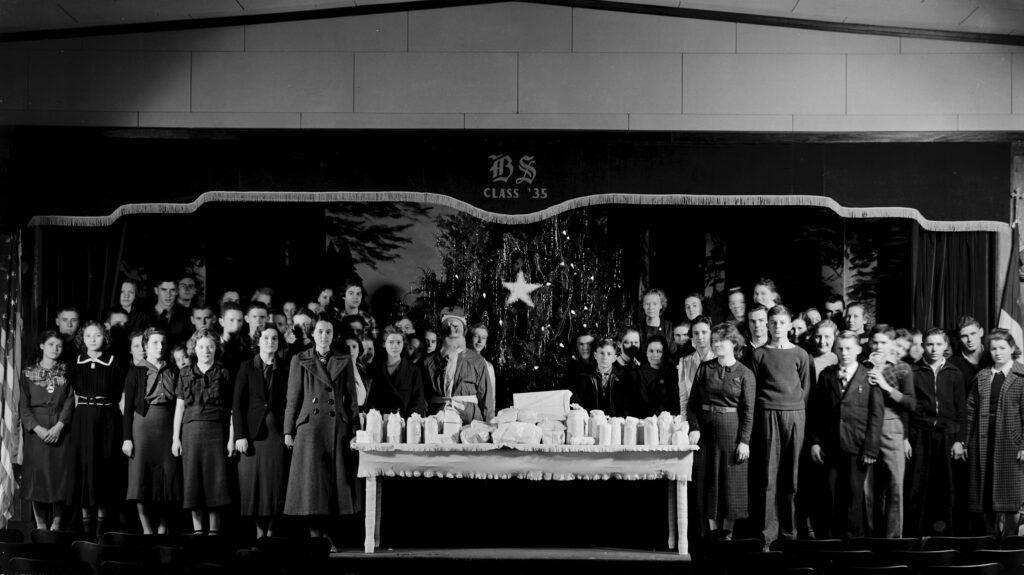
Many local churches, communities, and schools offered Christmas programs including songs, service, dinner, and sometimes even presents. Some churches distributed presents and families brought baskets to pack goods for home. Shipley United Methodist Church in Cookeville hosted Christmas Day with service, Sunday School, addresses, presents, and dinners in 1911. The annual Christmas program at the Cookeville Methodist Church on Cookeville’s square drew in over 200 people from the town and countryside and was declared the biggest celebration of the year in late 19th century Cookeville. One year it was so big it caused the church’s foundation to crack and settle. Poplar Grove had a community Christmas tree “trimmed in various colored confetti and tiny candles” and provided “gifts for all” in 1913. In Jackson County, the Woodrow School planned entertainment and a Christmas tree, and in Brotherton, Putnam County, the Christmas program was at the school; it had entertainment, a Christmas tree, several presents, speaking, and singing in 1917.
While there were fewer enslavers in the Upper Cumberland than in some of the South, slavery was in practice in the area. For instance, the White Plains home during the mid-19th century had approximately 100 enslaved people. Some enslavers would give gifts including goods, clothing, and shoes, usually from materials produced by enslaved people. The enslaved themselves could be gifts, as in the case of Louis Hughes, who wrote about being a gift for a purchaser’s wife for Christmas Eve in his autobiography Thirty Years a Slave. Some enslavers gave enslaved people time off for Christmas. Time off during the holidays was a tradition that Southern plantation owners followed, and it was derived from older European and colonial customs. When time off was given during the holiday, it was not necessarily from the kindness of the enslavers’ hearts, but rather from tradition and to prevent uprisings and hope of having the enslaved people conform to the European ideal of culture and religion. For instance, James Tubb of Smithville, the distiller, had 25 enslaved people and he allowed them time with their families. Many enslavers would “rent” enslaved people for the year and these contracts would be completed by the end of the year, meaning many returned to enslavers at Christmas.
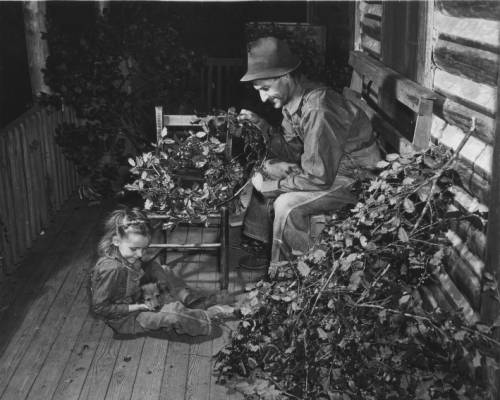
Christmas trees appeared in the southern United States after the Civil War. According to historian William Lynwood Montell, Christmas trees were in most living rooms by the 1920s, but uncommon before that. Before Christmas trees made it into living rooms, the Upper Cumberland had community Christmas trees, many offered by local churches and communities. Smithville’s first Christmas tree was in 1875 at the Smithville Methodist Church. Katy Lorena Angel Emery remembered going to see community Christmas trees at Ravens Croft and Glade Creek Church in the early 20th century. There was also a community tree in Union Grove in 1913. Popular Christmas trees were spruce and fir, but in the Upper Cumberland, the Eastern red cedar was popular due to its size, shape, aroma, and distribution. Trees were decorated with popcorn, paper ornaments, and paper chains. Other decorations include magnolia leaves, pinecones, natural berries, and evergreen branches on the mantle. Katy Lorena Angel Emery also remembered picking mistletoe and holly with red berries to decorate and for stringing night, where she was taunted by the fresh popcorn they were stringing for the tree.
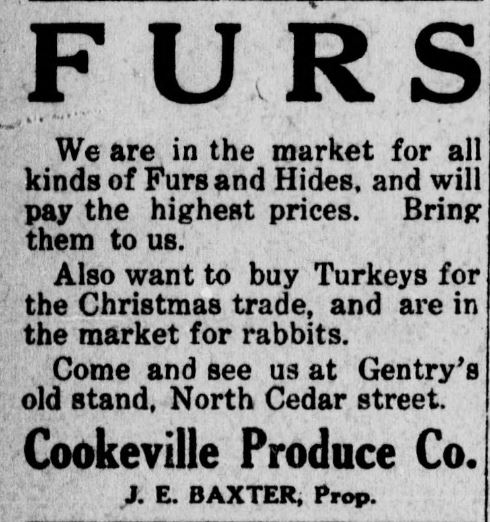
Limited on Christmas fixings due to a lack of supermarkets and transportation infrastructures, produce and food goods were more limited in types, although many stores got in delicacies for the season. For dinner, a traditional meal included deer or turkey that was hunted prior. At the turn of the 20th century, chicken replaced wild turkey for a short while due to wild game scarcity from hunting and habitat destruction. In 1917, Cookeville Produce Company sought turkeys from hunters for Christmas and would pay the “highest price.” Turkey appeared again after commercialization of the meat (early 1900s). Sorghum molasses was popular and readily available in the Upper Cumberland (1850). It was baked into gingerbread and cookies. Sorghum, imported from Africa in 1857, was grown locally instead of sugar due to its shorter growing season and price. Other accounts of Christmas feasts include opening canned goods from the summer and uncovering apples holed up for the winter in pits or apple houses. According to newspaper ads, specialty food items for sale on Christmas in various Upper Cumberland stores included oysters, prunes, dates, citrons, currants, mince meats, pickles, nuts, pepper sauce, jellies, raisins, and sardines.
Around the turn of the 20th century, gift-giving became more common throughout the United States. Stores would advertise numerous toys and sweets. Most children in the Upper Cumberland did not receive a substantial number of gifts – if any – until the 1940s, according to Lynwood Montell, though stockings were in the Upper Cumberland by the 1860s. According to Emily Spivack writing for Smithsonian Magazine, stockings were a custom derived in approximately 1823 with the publication of “The Night Before Christmas (Account of a Visit from St. Nicholas)” by Clement Clark Moore which read that Santa “fill’d all the stockings; then turn’d with a jerk.” Early gifts included marbles, riding stick horses, bladders of butchered hogs that were popped for noise, and shoes in lye soap for sledding.
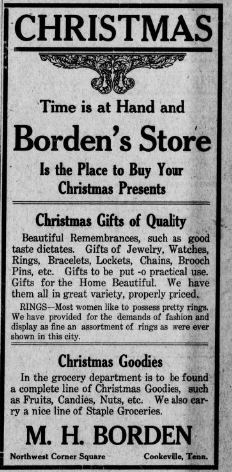
The children asked for a few toys and candies. A small toy, called by some locally a “grimcrack,” was often put in the stockings or gifted. Boys may get knives, and girls may get dolls and doll accessories, including the sleeping doll with eyes that closed, which was developed in the late 19th century. Candies and confectionaries were popular including peppermint sticks, twisted candy, and jawbreakers. Sugar was expensive and a regular diet of candy every day was uncommon due to cost and availability. Children did not ask for many gifts in the early 20th century. Ovanlie Myers only asked for “lots of candy and oranges” for Christmas and Evelyn Blank asked for “a nice new doll, candy, oranges, apples, and bananas.” These requests for presents from Santa were often published in the local newspaper. At the beginning of the 20th century, advertising for Christmas wares began in early November in the Putnam County Herald. Wares such as bicycles, toilet sets, books, toy stoves, balls, and pistols were advertised by Phillips and Buttorff Manufacturing in Nashville. Finer gifts, such as silverware and tableware, were advertised by M. H. Borden. Gift-giving gradually expanded by the late 20th century and became more common as the holiday traditions expanded, due to Christmas retail marketing strategies and promotion increasing the commercial empire that Christmas is in the 21st century.
For Christmas, many children asked for and received oranges because they were special despite their common appearance in the grocery store today. When the railroad came to Tennessee, Upper Cumberland residents could take shopping trains to Nashville on the Tennessee Central Railway but also receive goods from other states, such as Florida. With the availability to move items easier, children received more exotic items such as oranges and stalks of banana, and later at the turn of the century, there are even accounts of coconuts. Oranges were extremely popular and considered rare and expensive. The orange was popularized in the 19th Century with hanging stockings. It was the most popular memory and present according to many accounts. On Christmas day in 1849, the White Plains general store in Algood, Tenn. made 25 sales, mostly including sugar and coffee. One sale to Stephen Decatur Burton included three dozen oranges at $2.90. In 1920, Willie T. Scott asked Santa for “all the candy, nuts, apples, and oranges you can carry.” A letter published on December 19, 1912, from Umatilla, Florida to the Putnam County Herald shared that “Orange picking and packing is the order of the day…” and that, “Twelve carloads left here this morning, so look out for Christmas.” Transportation infrastructure increased the availability of goods for the holidays in the Upper Cumberland.

Fireworks and firecrackers of all sizes were incredibly popular in the whole South at Christmas time, including Roman candles, sparklers, skyrockets, split devils, and torpedoes (circa 1900). Many accounts in Southern history could not separate fireworks as part of the Christmas holiday, more so than the Fourth of July. Firecrackers might seem like an odd present for children, but this request appeared as early as the Victorian era. In McMinnville in 1890, the Southern Standard reports that “The small boy’s stock of fireworks…played out early on Christmas eve. Our streets were as quiet as usual by nine o’clock.” According to A. L. Stone, “Christmas was observed here [in Baxter] in the usual [sic] style, exploding fireworks, Christmas tree, and Santa Claus” (1911). Walter Hays Greenwood specifically asked for “some sparklers and some soldiers that stand up” for his Christmas gift (1921). Some announcements in the paper regarding fireworks were a little more ominous including this message from an unnamed Putnam County expat to Taylor Dunavan asking “…have you forgot last Christmas day? Is old Red afraid of firecrackers now?” If fireworks were not available, firearms could be discharged, leaving some to claim that the South had “the loudest Christmas in the world.” Creatures were stirring at Christmas in the Upper Cumberland.
The Christmas holiday also brought the community together to help those in need through charitable works. In 1918, the First Presbyterian Church offered a Christmas program with gift packages to be brought to everyone — “anything that would help any poor woman or child have a happy Christmas.” Gainesboro Telephone Company held “bundle day” to hang stockings for the collection of goods for needy children. On November 23, 1916, United Charities hosted a Charity Bundle Day and the boxes delivered filled with clothing and provisions. In 1916, the Ladies Aid Society gave away presents and food baskets to children whose parents could not afford them. Numerous groups and churches came together to ensure children and families had a proper holiday – so much so that in the Putnam County Herald on December 13, 1917, one citizen complained that there were, “too many charities, too many begging committees, too many different ways of getting glory by spending other People’s money.” Fortunately for some children, it appears from the newspaper that more people were participating in the charities than there were cynics.
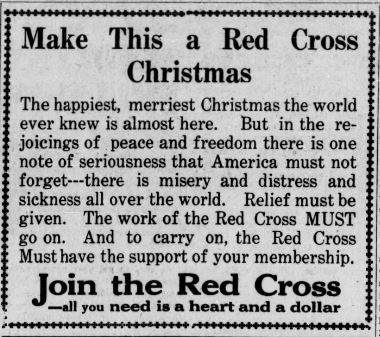
One event that happened at Christmas that is much less common now, is the act of getting married at Christmas. This was an earlier Victorian tradition from the 18th and 19th centuries that the Upper Cumberland participated in until the early 20th Century for the same reasons. Many people worked six days a week with one day off and possibly December 25 and 26 would be days that most people had off. There were no paid vacation days, making the holiday the best time to convene for a marriage celebration, and the service cost less on Christmas day. Mitchell Jackson and Jennie Young married on Christmas in 1913, Dr. H. E. Sidwell and Hettie Windle of Celina, John Nash and Ova Chaffin, and Hiram Lee and Almeda Thomas were all married on Christmas in 1912. In 1919, Fanalue Whitson and William Benton Carlen married on Christmas Eve at 9:30 pm. Before the 20th century, enslaved people, when they did receive time off for the holidays, also took advantage of the Christmas season to marry. Weddings before the late 20th century were mostly simpler affairs and less expensive.
Christmases in the Upper Cumberland followed newer Christmas practices, but some customs were more slowly adapted and other customs were unique to the region due to the resources available. The rural nature of the Upper Cumberland, limited transportation and roads, and income differences separated the Upper Cumberland from other areas of the United States. However, the region adapted these traditions to fit their needs or adopted them later as it became more feasible due to regional developments. Despite these differences, the Upper Cumberland created a meaningful holiday for the region that left a positive impression on the many children who grew up in the area.
Due to the vast coverage of the local community, Upper Cumberland newspapers preserved these memories for individuals to learn of the experiences of Christmases past. The bulk of this article resulted from research using the Putnam County Herald newspaper. The Herald-Citizen has chosen Tennessee Tech as a repository for their bound volumes and they are open for research M-F, 8-4:30. Early issues of the Putnam County Herald (1903-1922) are available online through the Library of Congress’s “Chronicling America” newspaper project. As a result of this research, the bulk of this information mostly represents the Cookeville area of the Upper Cumberland.
References
Byrn, Morgan. (2021, December 14) Dear Santa, Can I have oranges, candy, and some firecrackers? Junior Curators Newsletter. Retrieved December 1, 2023, from https://tnmuseum.org/junior-curators/posts/dear-santa-can-i-have-oranges-candy-and-some-firecrackers?locale=en
Earl, James, Mary C. Kennamer, Ron Brenneman. (n.d.) History of the Wild Turkey in North America. National Wildlife Turkey Federation Bulletin, No. 15. Retrieved December 1, 2023, from https://www.mdwfp.com/media/4016/historywildturkeynorthamerica.pdf
Family Tree. (n.d.) Weddings Between Christmas and New Year’s Day. familytree.com. https://www.familytree.com/blog/weddings-between-christmas-and-new-years-day/
Heitman, Danny. (2016, Fall) How Washington Irving Shaped Christmas in America. Humanities, Vol. 37, No. 4. Retrieved December 1, 2023, from https://www.neh.gov/humanities/2016/fall/feature/how-washington-irving-shaped-christmas-in-america
The Herald-Citizen:
November 23, 1916; January 5, 1911; December 21, 1911; December 28, 1911; December 05, 1912; December 19, 1912; January 02, 1913; December 18, 1913; December 25, 1913; January 2, 1913; December 23, 1915; December 16. 1915; January 06, 1916; December 21, 1916; December 13, 1917; January 03, 1918; December 19, 1918; January 2, 1919; December 25, 1919; December 16, 1920; December 15, 1921; December 22, 1921; December 1939.
Jackson County Sentinel, December 23, 1920.
Mansky, Jacky. (2018, December 21). Why We Should Bring Back the Tradition of the Christmas Orange. Smithsonian Magazine. https://www.smithsonianmag.com/arts-culture/why-we-should-bring-back-tradition-christmas-orange-180971101/
May, Robert E. (2019) Yuletide in Dixie: Slavery, Christmas, and Southern Memory. University of Virginia Press.
Southern Standard, December 24, 1881; December 27, 1890
Waxman, Olivia B. (2021, December 21). The Grim History of Christmas for Enslaved People in the Deep South. Time Magazine. Retrieved December 1, 2023, from https://time.com/6126789/christmas-slavery-lost-cause-confederacy/
Webb, Thomas G. A. (1995) Bicentennial History of Dekalb County, Tenn. Bradley Printing Company.
Posted in General, Uncategorized
Comments Off on Exploring Yuletide Treasures: A Glimpse into the Upper Cumberland’s Historic Christmas Celebrations
Crafting Tradition: The First Lady’s and Tennessee Tech’s University Flag
by Tammy George
Gloria Bell was a first lady at Tennessee Tech with her husband, President Robert Bell from 2000 to 2012. Gloria Bell was the designer of the Tech Flag.

As first lady, Gloria Bell desired to leave a lasting gift to the campus she served, and that began with a search through the university’s archives. Bell wanted to design a flag for the university marking the spirit and traditions of the campus. Through her research, she established that there was no official flag dedicated to the university. With general ideas already formed, she used basic materials of colored wrapping paper and hand drawings to create samples of her vision. Bell convened a group of university alumni and other campus representatives to assist her in finalizing the design. For more than a year, Bell worked with the selected focus group to create an official flag following five key rules which were: keep it simple; use meaningful symbolism; incorporate only 2-3 basic colors, no lettering, identical sides, and lastly, the flag must be distinctive or be related.
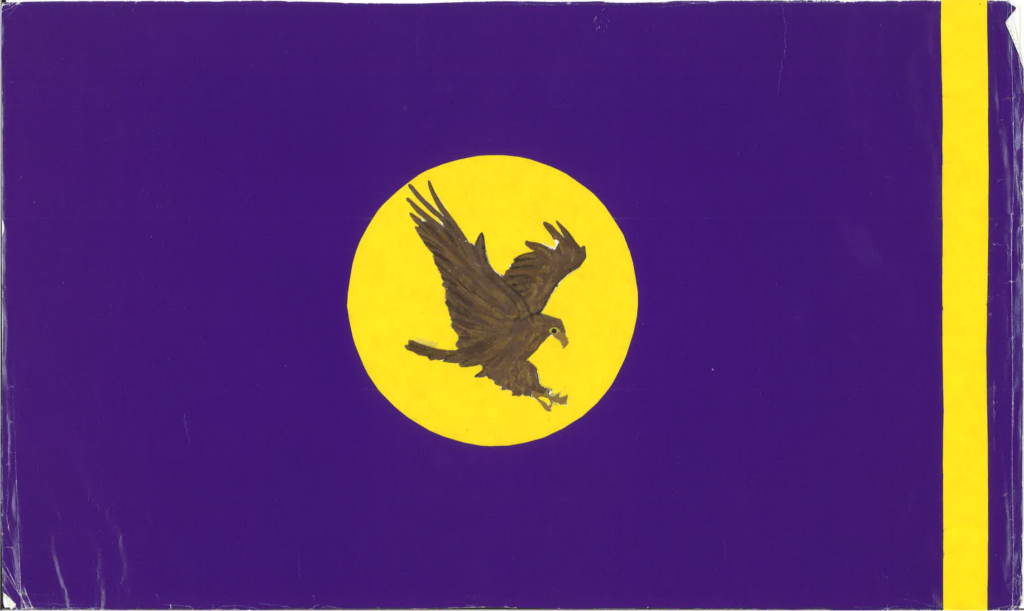
It took several rough drafts with various arrangements of the shapes and images to come to the final design. Bell’s first rendition of the design was a solid purple background with a golden circle set in the center displaying a brown eagle with outstretched wings and a vertical golden column along the end. The final goal of the flag was to honor the most familiar and longstanding traditions of the university. Along with the focus group, Bell’s final concept resulted in the university’s first official flag. The flag had these three components representing the historic and ideal characteristics of Tennessee Tech and its quality reputation including:
1. The golden eagle. This magnificent bird, with wings outstretched, depicts the pride, honor, strength, and spirit of our students, faculty, and staff.
2. The bold pillar. This column of gold represents the pillar of knowledge, intellect, and experience – all qualities of our prestigious academic reputation.
3. The purple base. This field of majestic purple represents the strong foundation of character, commitment, and endurance indicative of our university’s culture.
May this flag forever wave, and may the history and future of Tennessee Tech University prosper in its shadow.
“The Tennessee Tech University Flag.” From Tennessee Tech Archives RG 116 Christine Spivey Jones subject files, Box 47, Folder 4, October 2003
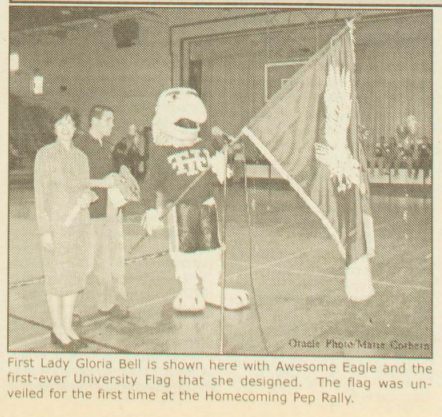
The University made the decision not to reveal an image of the flag publicly until students viewed it for the first time during an unveiling ceremony held at the Homecoming pep rally on Friday, October 31, 2003. Brent Waugh, President of the Student Government Association, introduced University President, Dr. Robert Roy Bell and First Lady, Gloria Bell, along with Julie Galloway, President of the TTU Alumni Association for the first presentation of the flag. The flag was also displayed for viewing at the Alumni Awards Reception which was held later that same day. Another presentation of the flag took place during a pre-game ceremony on the following evening, Saturday, November 1, 2003.
As of 2023, Gloria Bell’s flag was still the official university flag. The flag was displayed alongside the US and Tennessee flags in prominent locations around campus as well as in front of Derryberry Hall.
Bibliography
“Design of TN Tech flag 2002-2003.” From Tennessee Tech Archives RG 116 Christine Spivey Jones subject files, Box 47, Folder 4.
Lykins, Karen. “TTU First Lady Gloria Bell designs university’s first official flag.” TTU News, October 30, 2003. From Tennessee Tech Archives RG 116 Christine Spivey Jones subject files, Box 47, Folder 4.
The Oracle, Vol. 85 No. 7.
The Oracle, Vol. 85 No. 8.
“The Tennessee Tech University Flag.” From Tennessee Tech Archives RG 116 Christine Spivey Jones subject files, Box 47, Folder 4.
“TTU FLAG DESIGN.” From Tennessee Tech Archives RG 116 Christine Spivey Jones subject files, Box 47, Folder 4.
Posted in General, Tech History, Uncategorized
Comments Off on Crafting Tradition: The First Lady’s and Tennessee Tech’s University Flag
